Bolivia II, Part 1: Tarija to Villamontes and Santa Cruz
— Bolivia — 9 min read
December 2 - 10, 2010
I was back in Bolivia to see parts of this geologic marvel of a country that I missed on my first visit when I came down from the north in July. I was on a tight schedule of sorts for Brazil, so I had to skip a tour of southwestern Bolivia after I had my first major breakdown and had to turn north for the Amazon. It all works out well in the end, because I got to see much more of this country on this second visit.
It was also a relief to be back in a less developed country for a change after the expenses of Brazil and Argentina. Bolivia is an Andean nation and not that rich compared to its neighbors, but neither is it poor. It just seems to keep chugging along and it's a highlight on travelers' maps for the amazing landscape the Andes put on and the warm locals they encounter.
I headed up to the big city of Santa Cruz to refresh sanDRina before the rough off-road riding through the southwest. From there, I took the newly developed Ruta del Che, a remote trail following the last days of Che Guevara and getting to Sucre. After dipping down to Tupiza, the geologic fun started heading to Uyuni and its Salar. After playing in the bizarre landscape, the experience turned up a notch on the remote, high-altitude crossing via the Lagunas Route to northern Chile, the highlight of my ride thru South America.
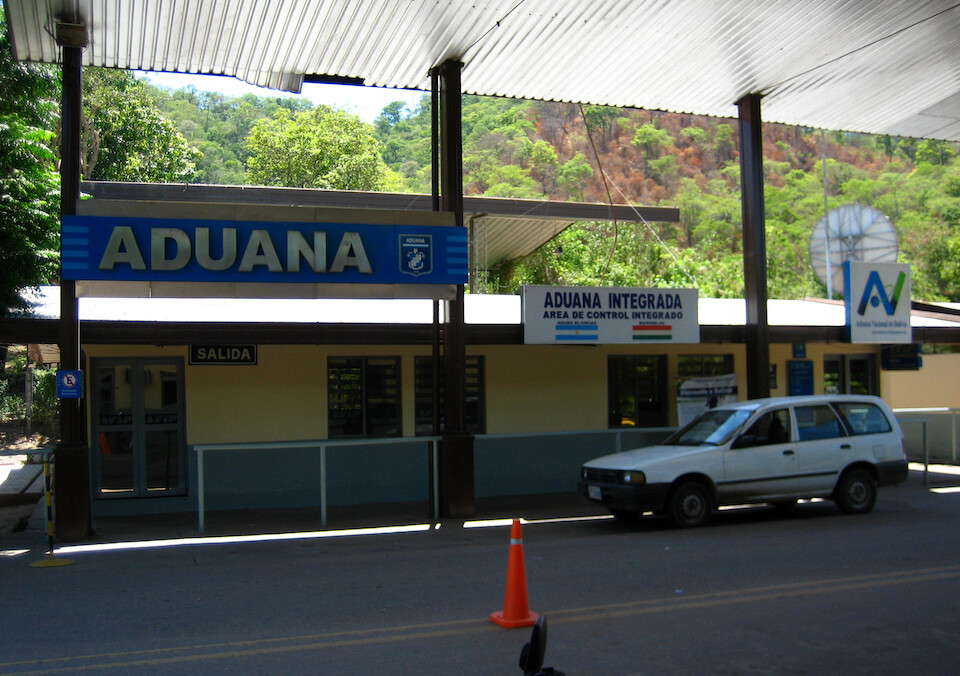
Efficient border crossing at Aguas Blancas (Arg) and Bermejo (Bol). Customs for both countries is in the same building, but immigration is in different buildings. Rather than fast and hard rules for each country, it seems the requirements at a border match what both countries are asking for there. Argentina is now in the habit of asking to see some sort of international motorcycle insurance and therefore, Bolivia also asks to see it when you cross here.
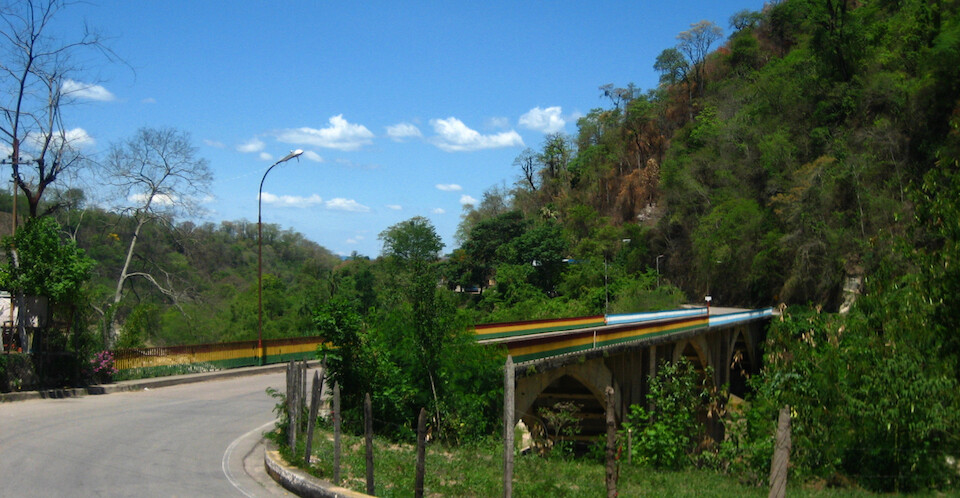
Cheerfully painted bridge across the border in each country's flag colors.
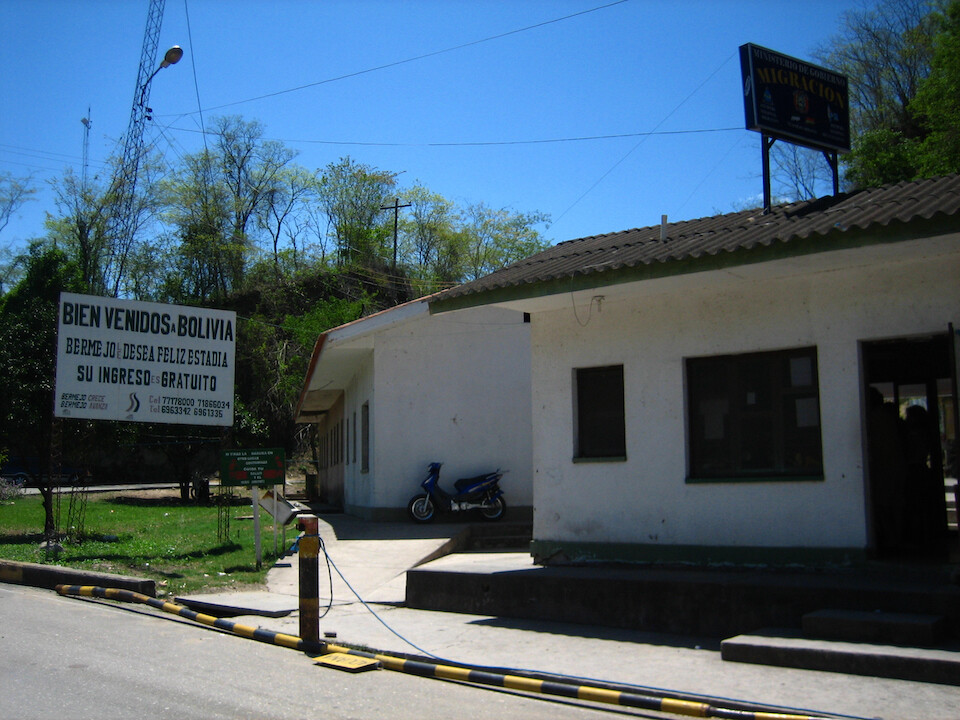
Bolivian immigration once you cross onto Bolivian soil. Being from a strange country to them, like India, always takes more time since they have to dig up the rules book and see what the agreement is between each country, regarding how many days you are allowed to stay.
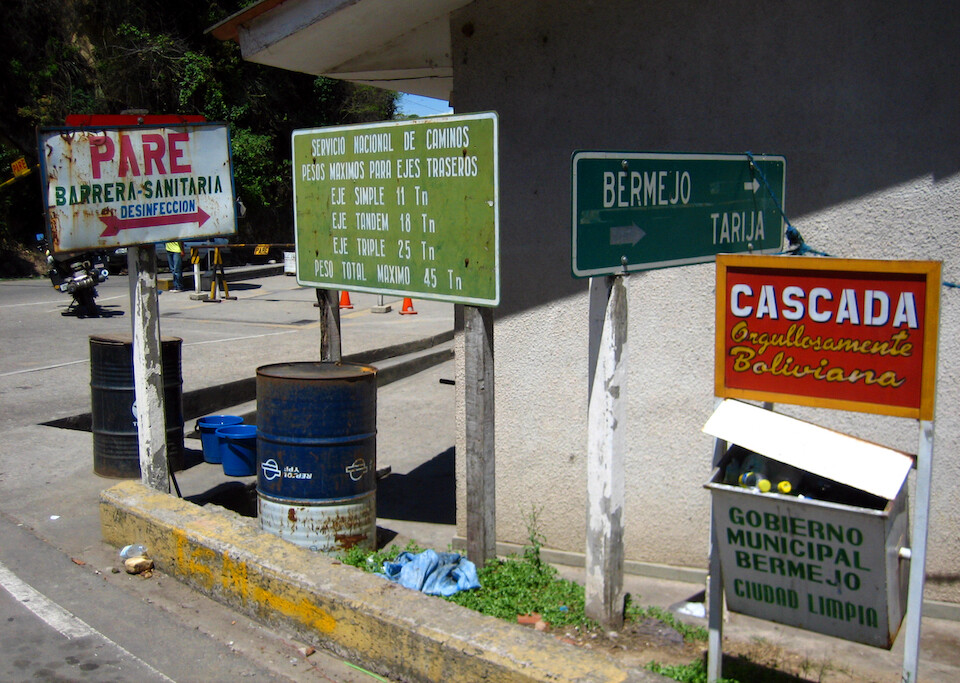
A mini sign-post forest, making it tricky to figure out which way to go.
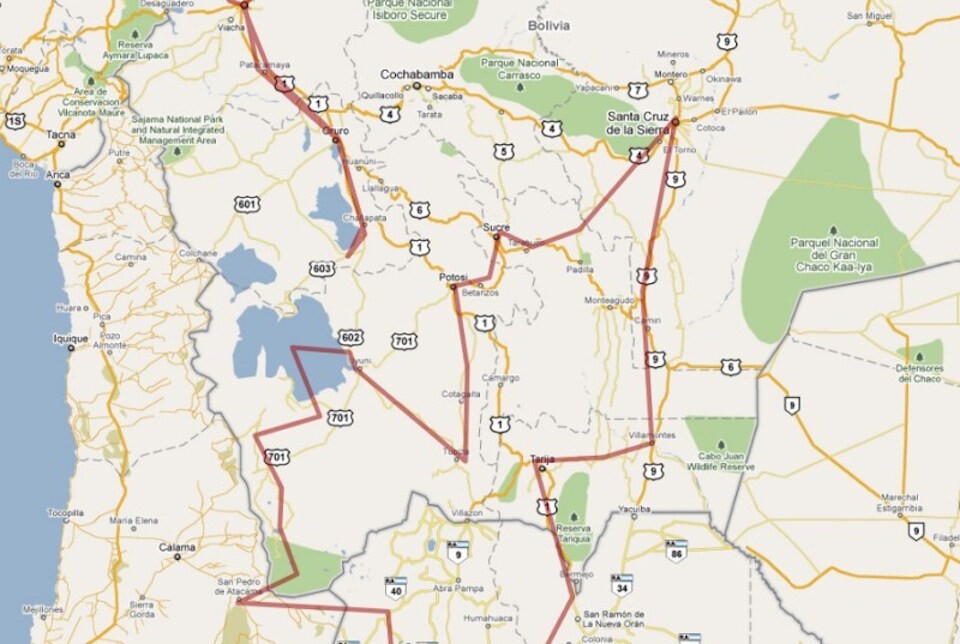
My route through southern Bolivia. Click on it to go to the interactive version in Google Maps.
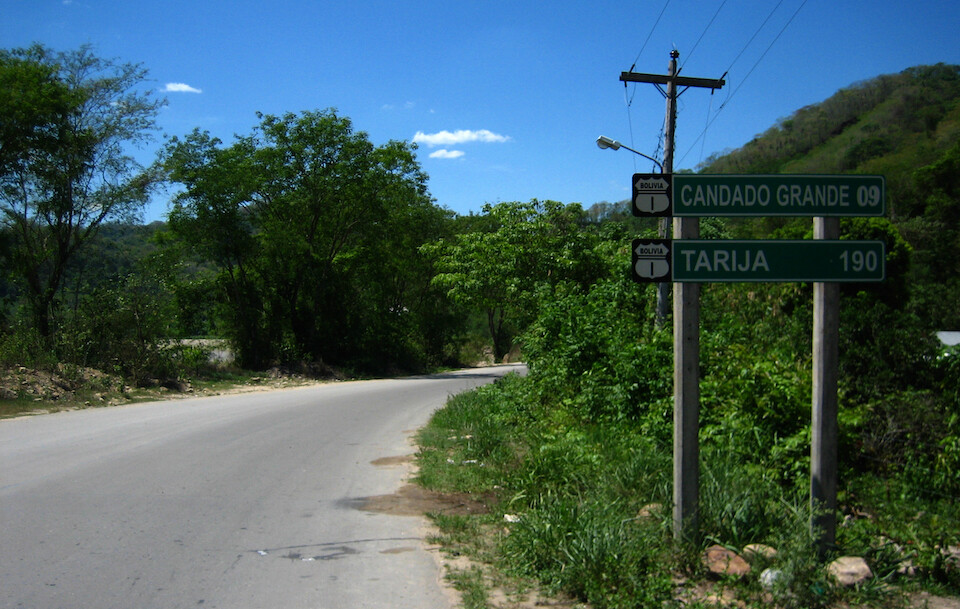
The border crossing took about an hour and I still had enough light to do the 190 kms (120 mi) to Tarija, the big city in the south, where I had a contact to stay with.
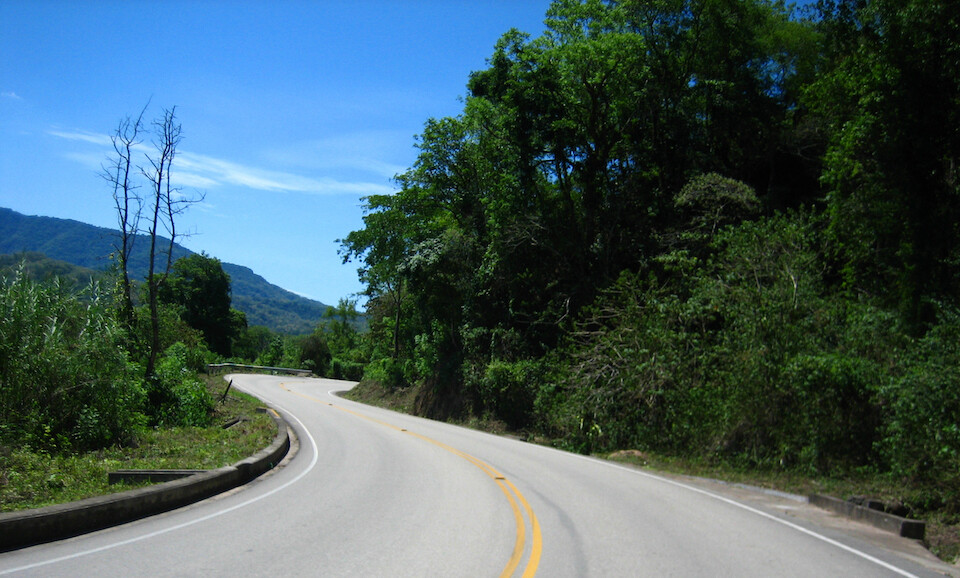
The paved road was very twisty and in excellent condition, making for a fun ride.
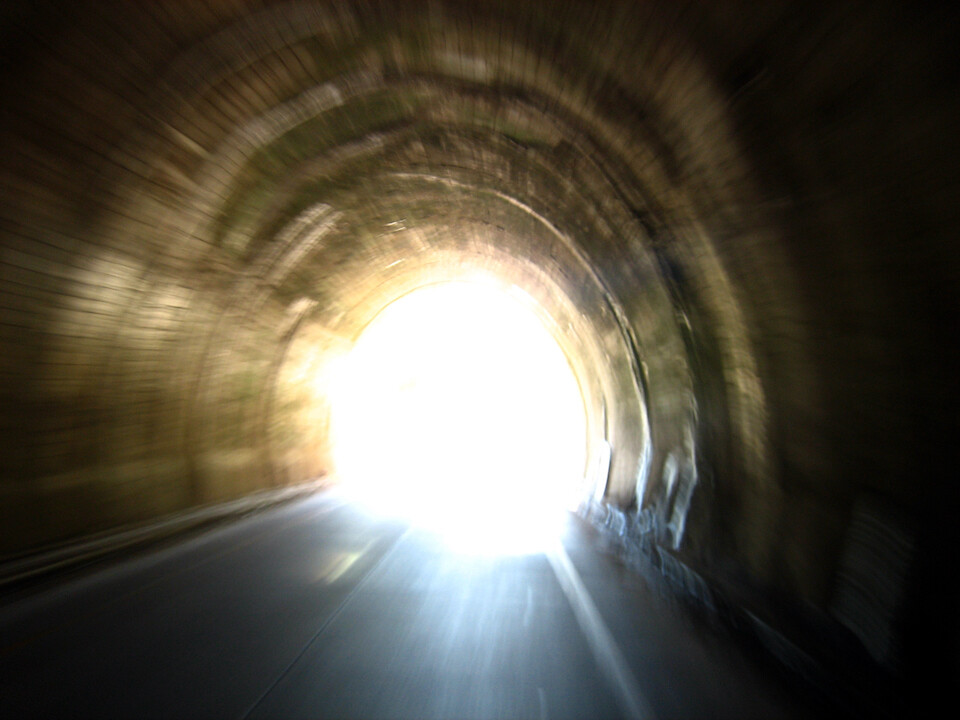
Tunnels - never stops to be a source of joy on a ride.
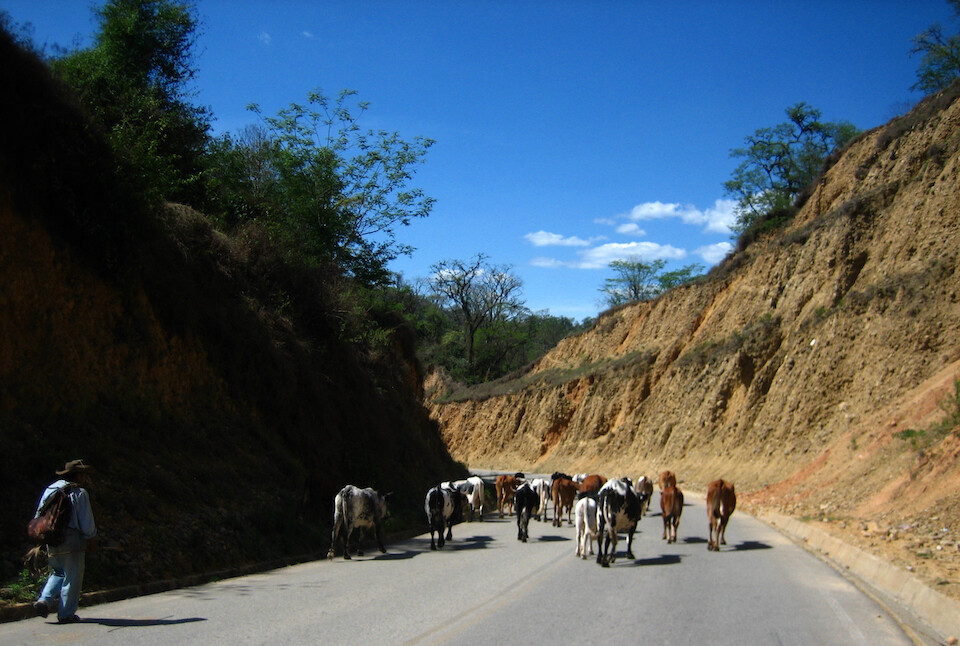
The road was quite empty, except for the occasional hoofed traffic as ranchers move their cattle from winter to summer grazing areas.
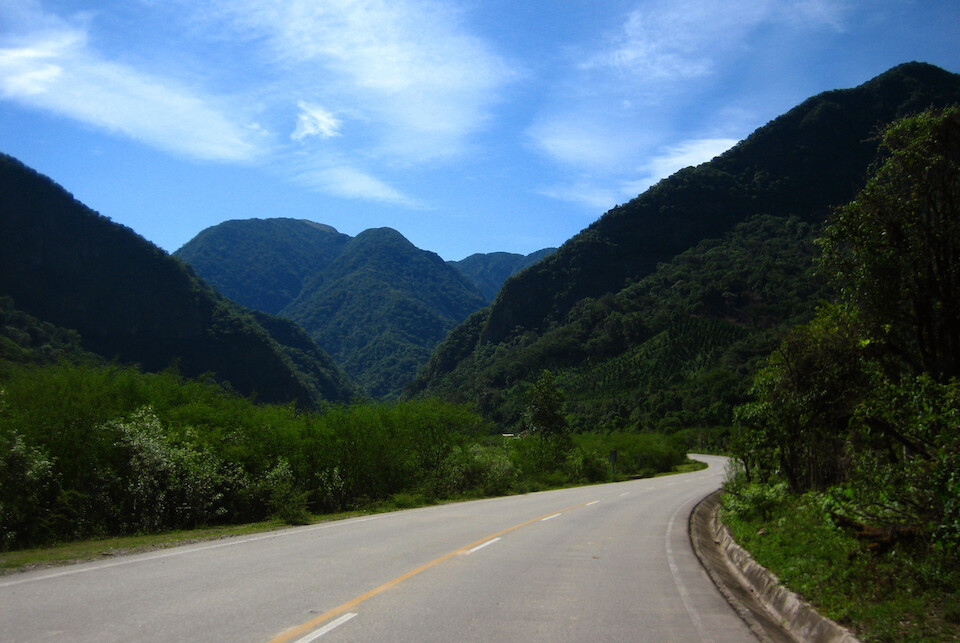
After the flat riding in Argentina earlier in the day, this was a welcome sight; carpets of green covered mountains with a twisting road up its side.
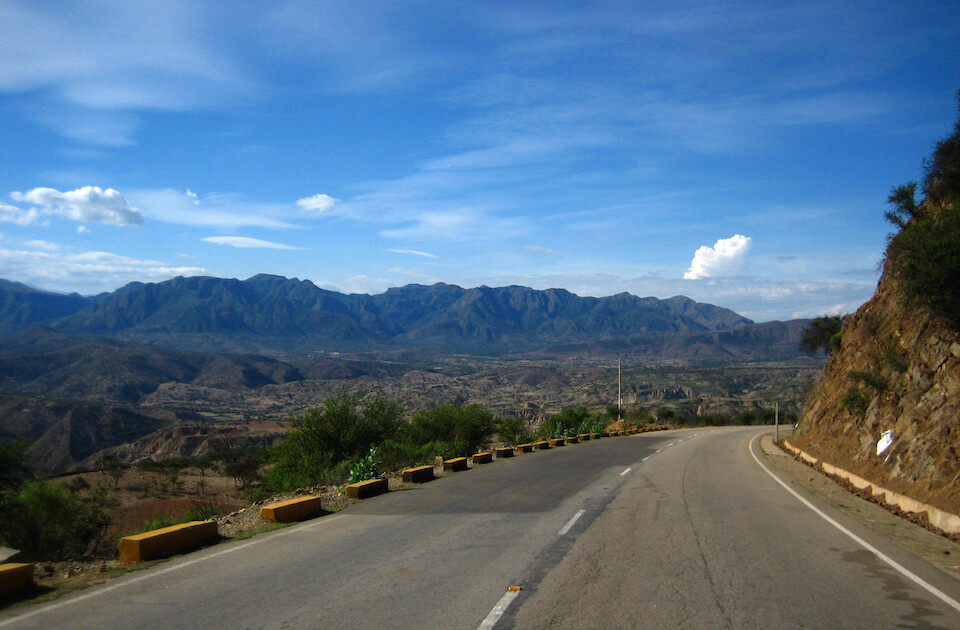
As I got near Tarija, the vegetation dried up, but the elevation kept up, making this an ideal wine-growing region.
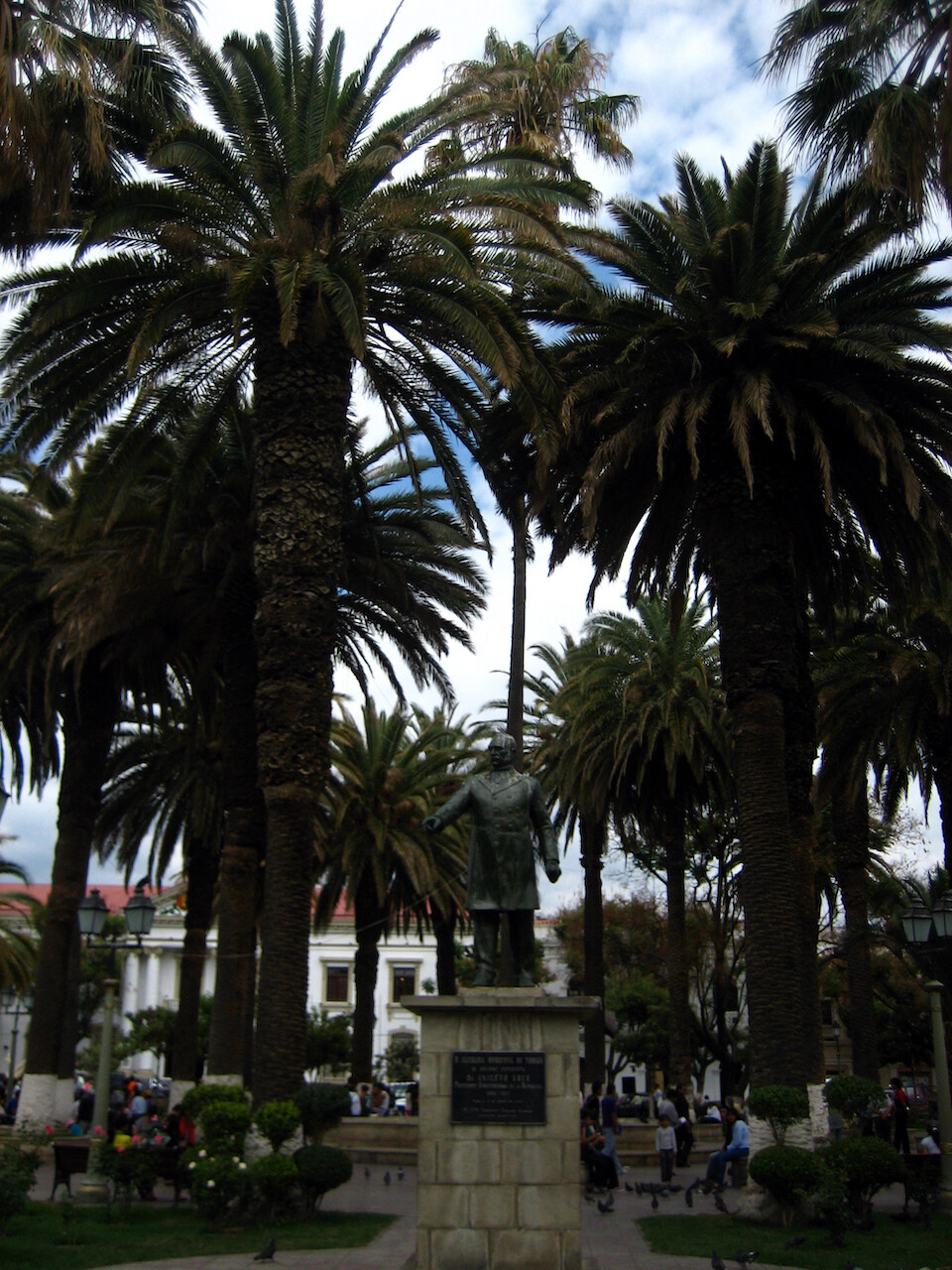
Tarija has almost a Mediterranean feel to it with date palms covering the central plaza. I took out some local currency and met up with Patricia, a cousin of Alfonso, my friend in La Paz.
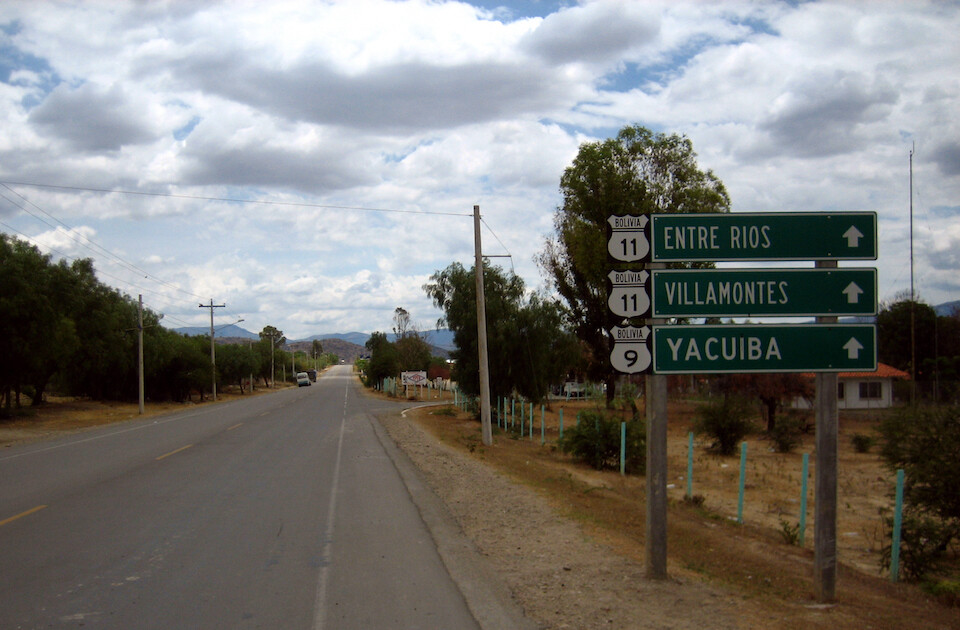
The next day, I headed east on the scenic Ruta 11 to Villamontes, 250 kms (155 mi) away.
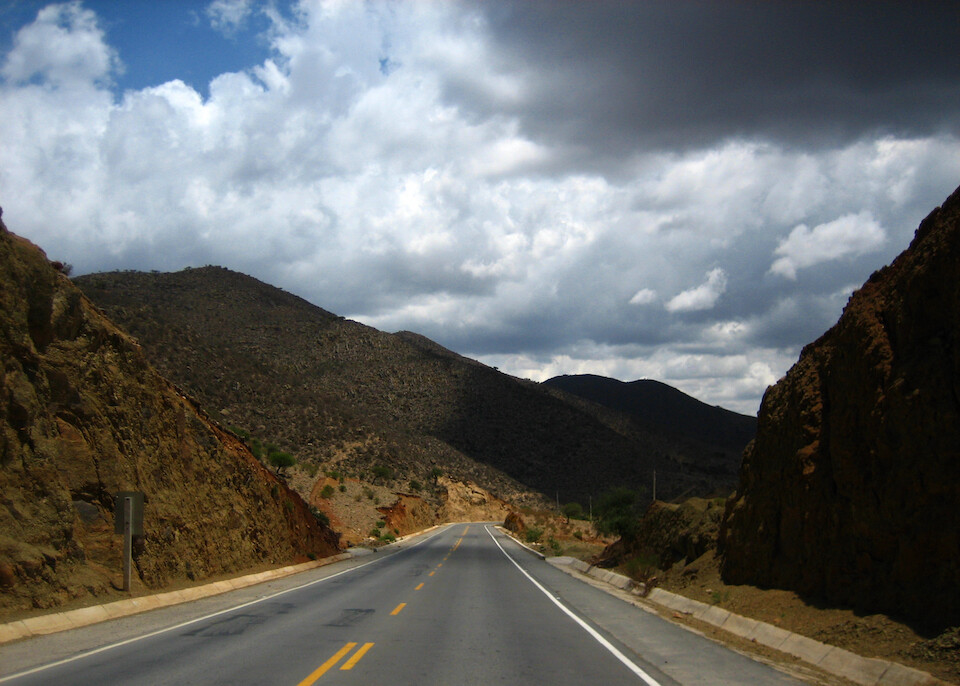
The route was paved initially and I took in the dry landscape.
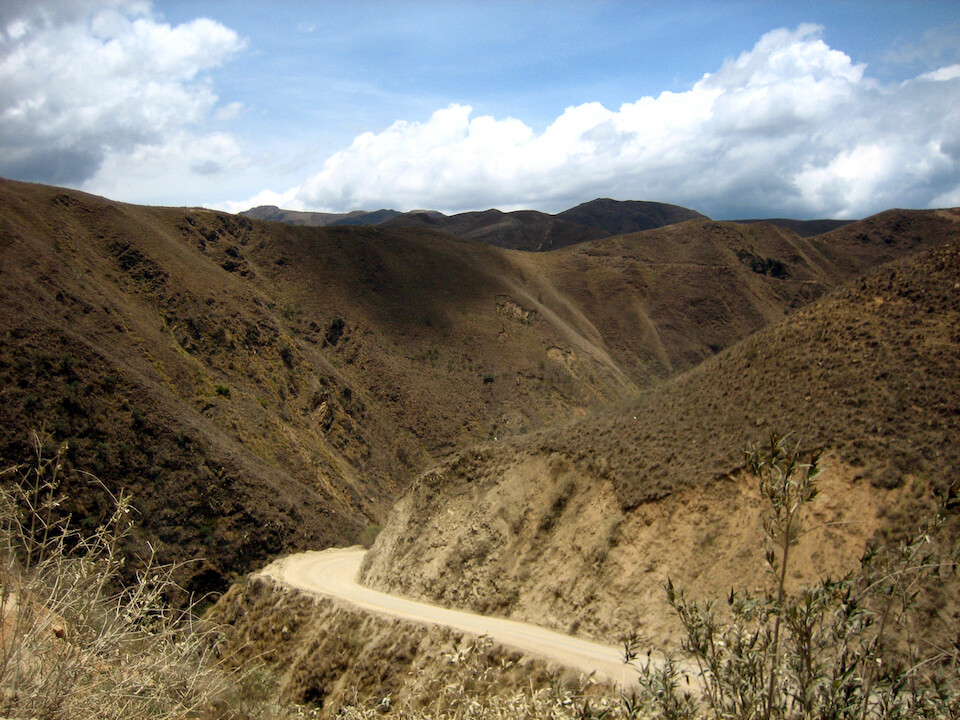
It soon turned into a small dirt road as it wound its way down the eastern flanks of the Andes.
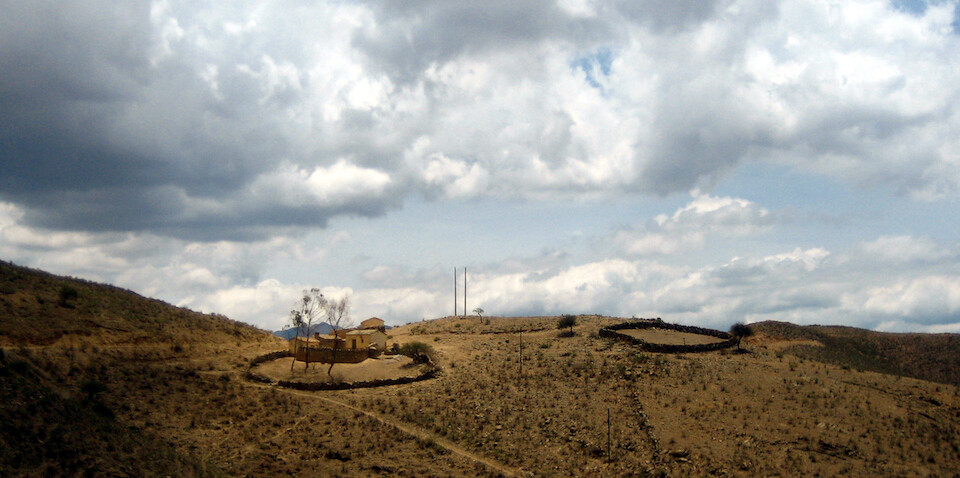
Stone-fenced pens on the dry hillsides.
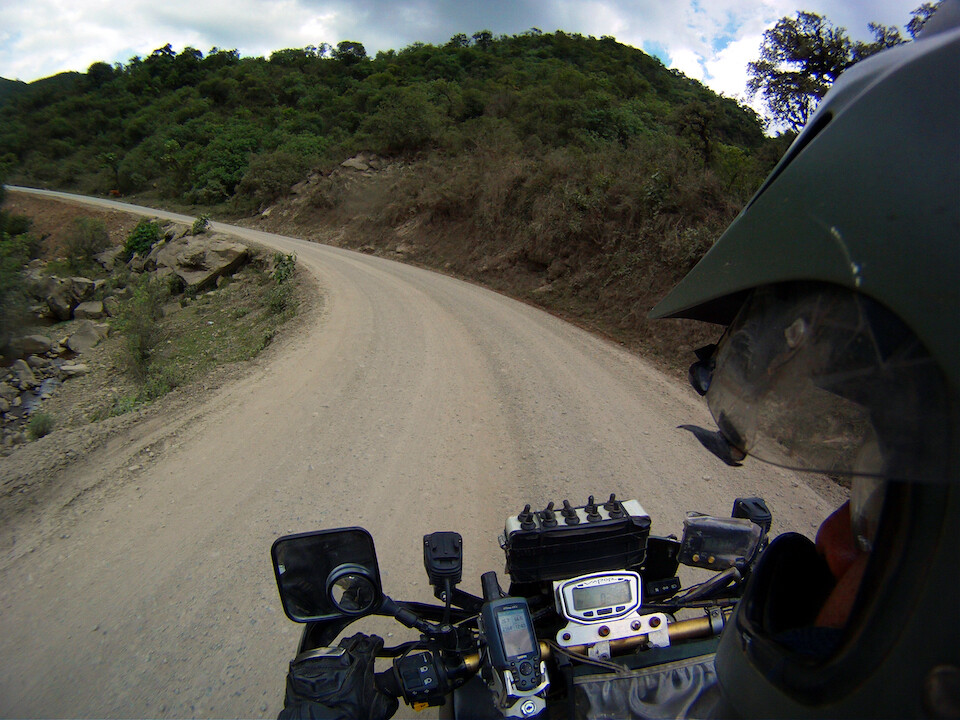
The road was in good condition, being hard-packed gravel with a fine layer of sand on top.
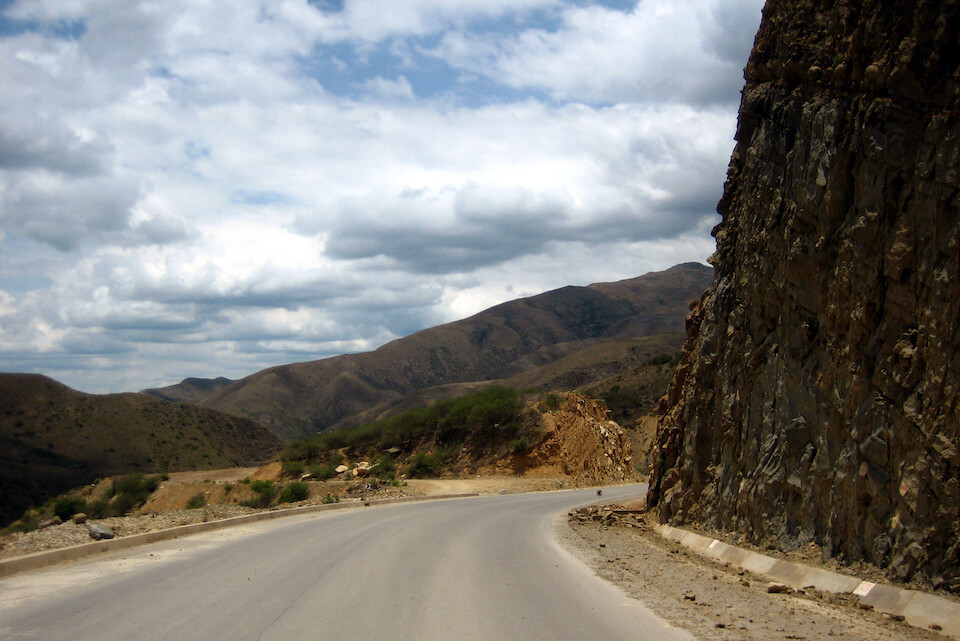
They were paving sections of it in the middle, where the route was accessible to large machines.
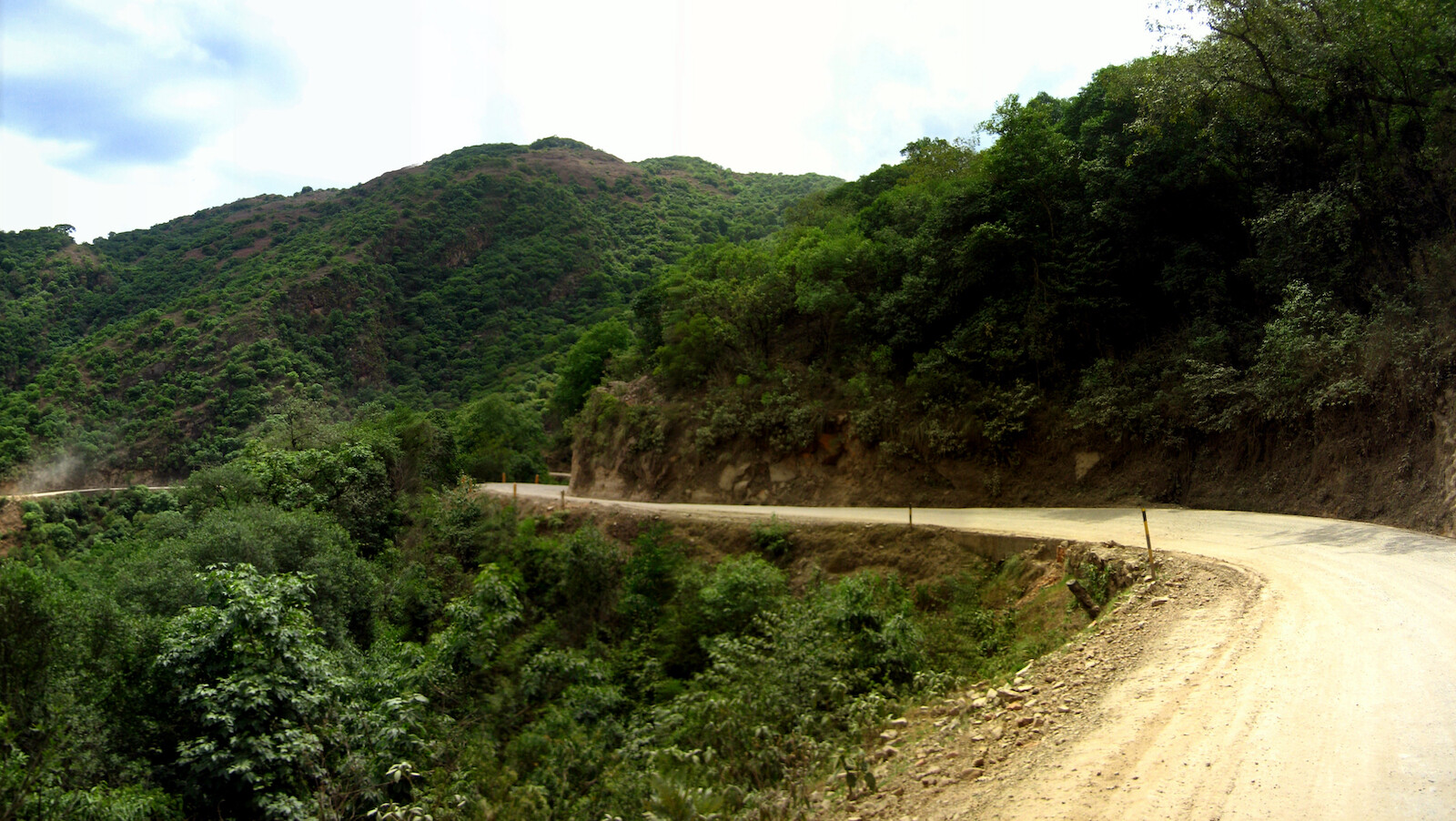
But large parts of it winded tightly along the contours of the hills.
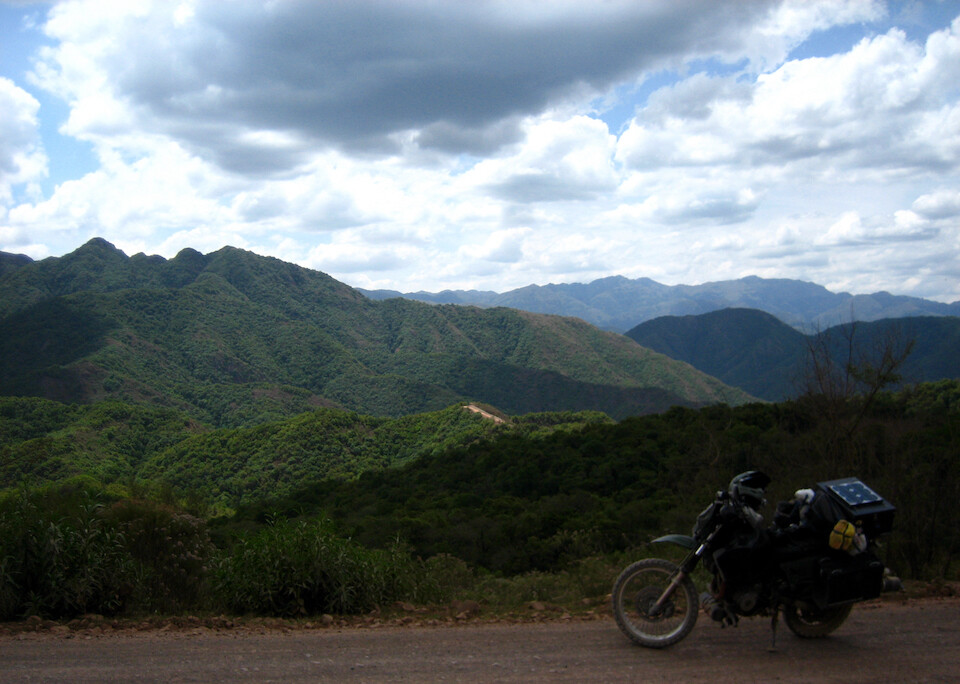
sanDRina's paint scheme blending in nicely with the natural colors.

The route was especially enjoyable when it went through tight canyons where the steep sides and tall trees made you feel small.
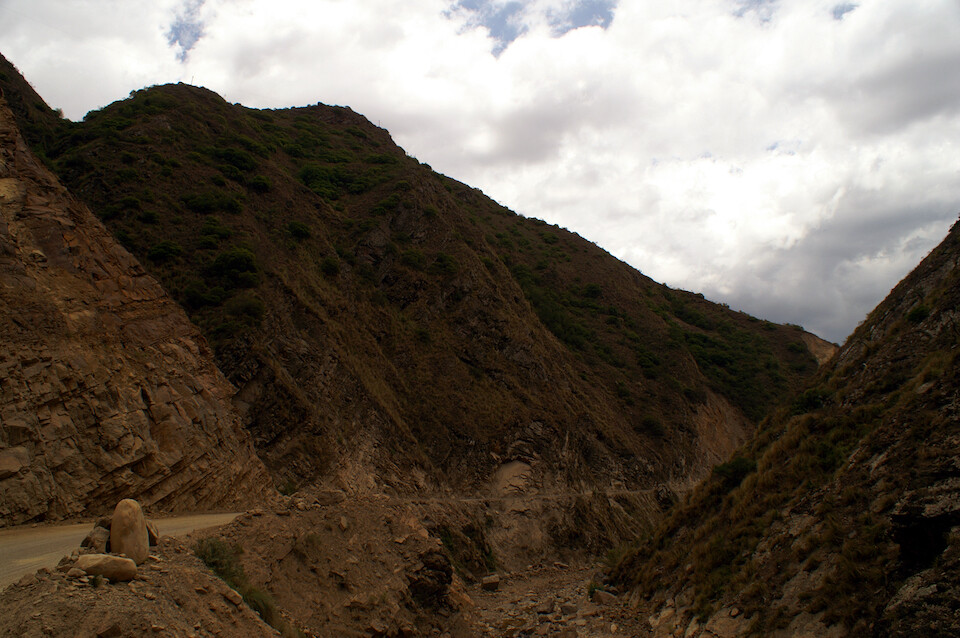
The route opening up near Entre Rios as it passed along the carved cliffs of this dried river bed.
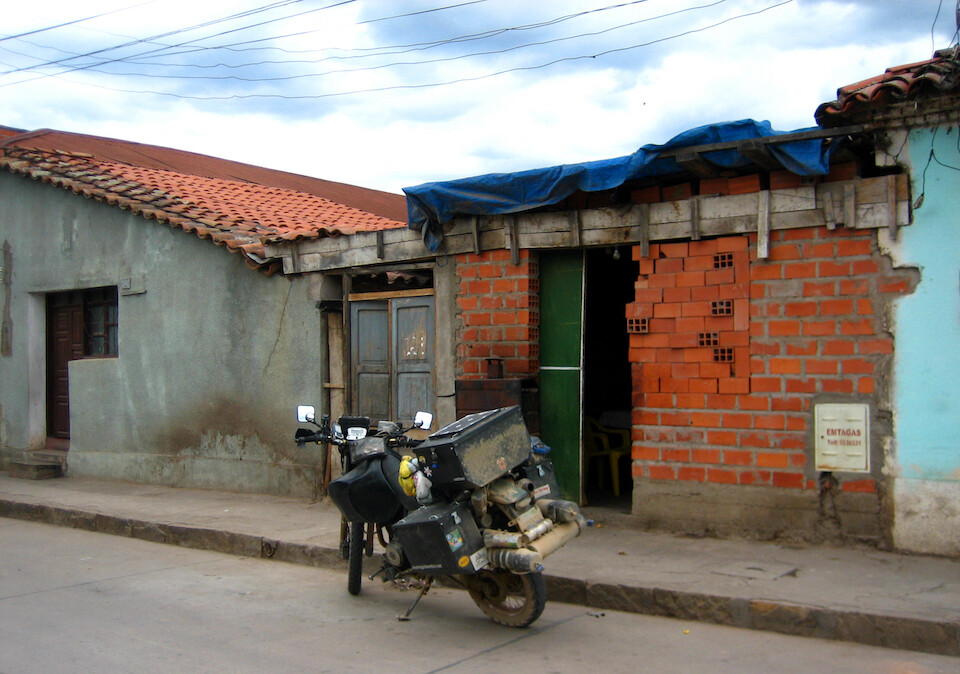
Now, that's what you call a hole-in-the-wall kinda place. I didn't want to stop in the busy square of Entre Rios for lunch, to be surrounded by onlookers, so I scoured the surrounding streets and found this open door with a table and chair ready for patrons.
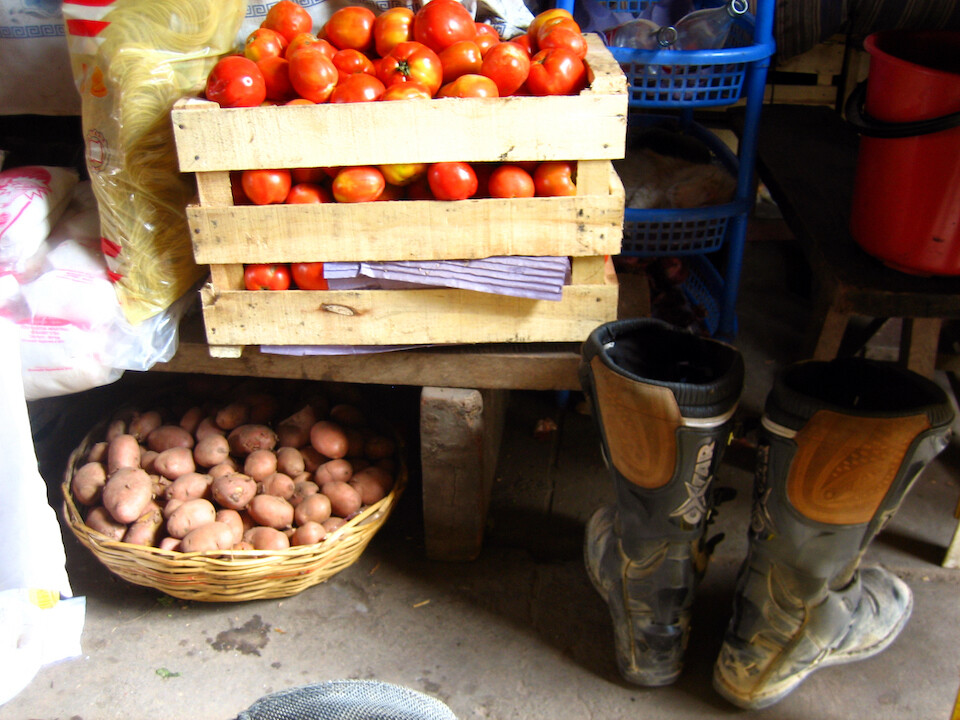
It was a restaurant, but felt more like eating in the owner's house, especially with the lack of other patrons.
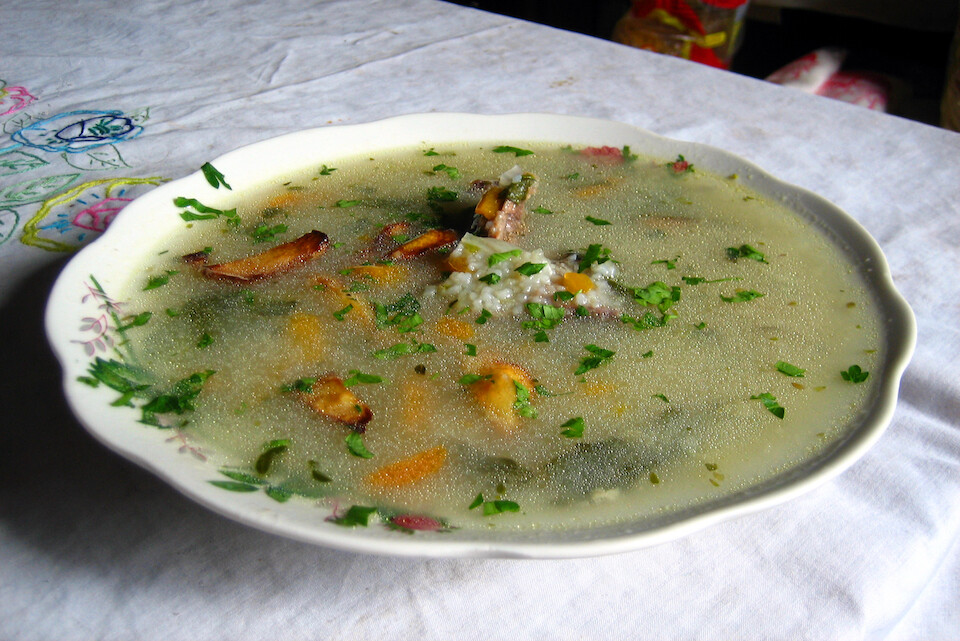
Getting the full Bolivian Almuerzo (set lunch), which starts with a soup loaded with carbs and some meat (and french fries in this one)...
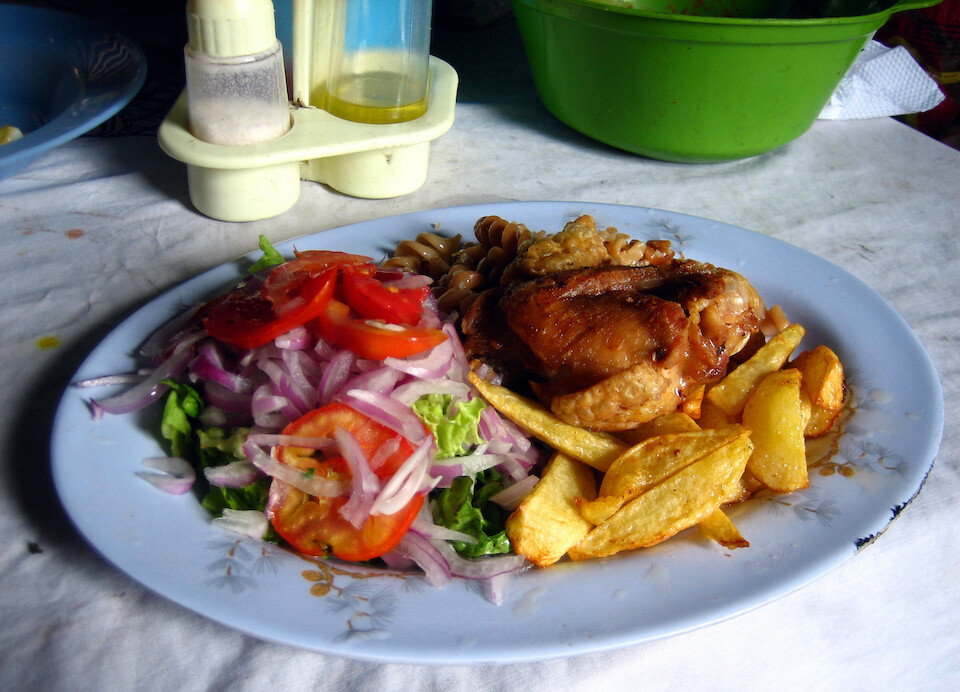
With the secundo (second course, main course) being some friend chicken with pasta, fries and some salad. All for 10 Bolivianos (USD 1.45).
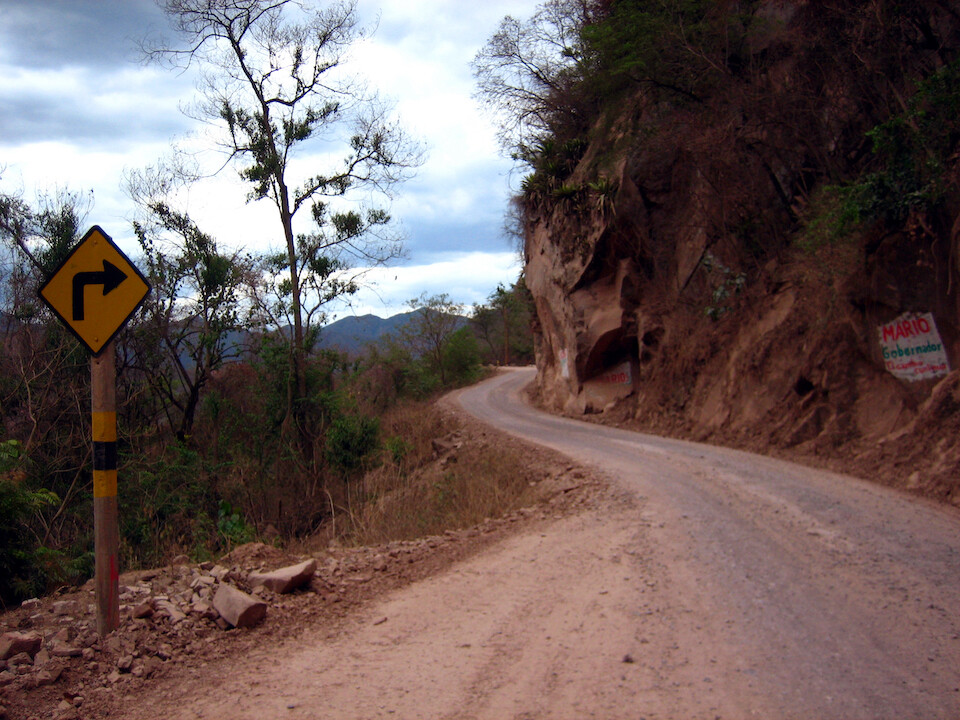
I usually avoid a heavy lunch while riding since it makes me sleepy in the mid-afternoon (when all the blood has rushed down to help digest the meal), but no worries on a dirt road as I discovered while riding the TransAmazonica. My attention is much more piqued while riding dirt than pavement, since the loose surface can quickly lead to a tip over and this increased use of brain power keeps my attention going the whole day (supplanted with appropriate music, of course).
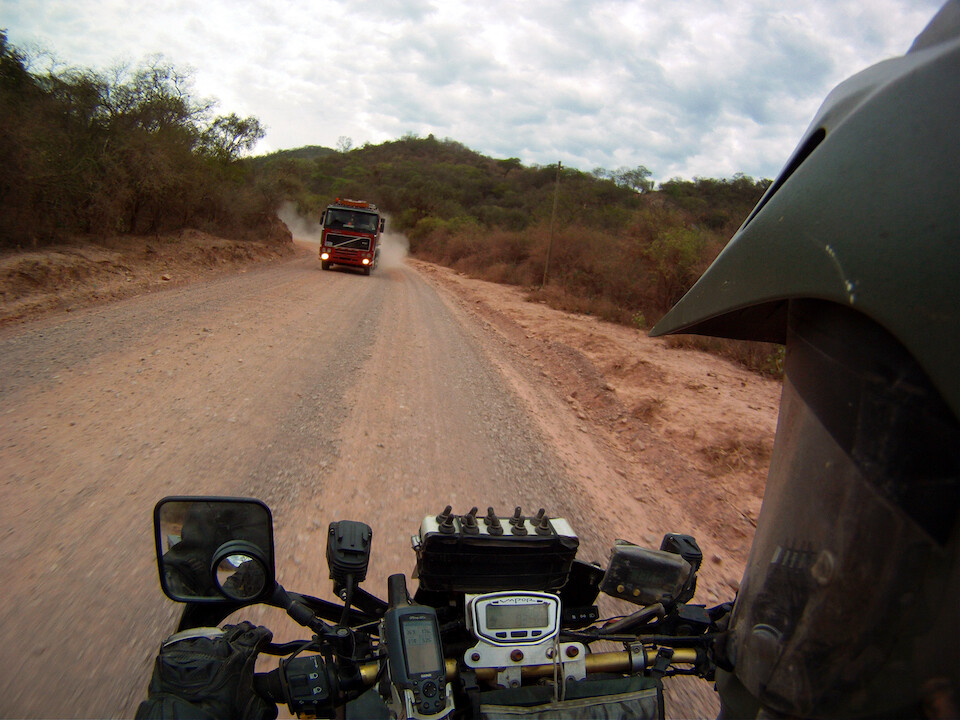
The only downside of this route is the regular truck traffic and the ensuing dust clouds that you must ride through. A helmet with a face shield being invaluable as you swim back into clean air.
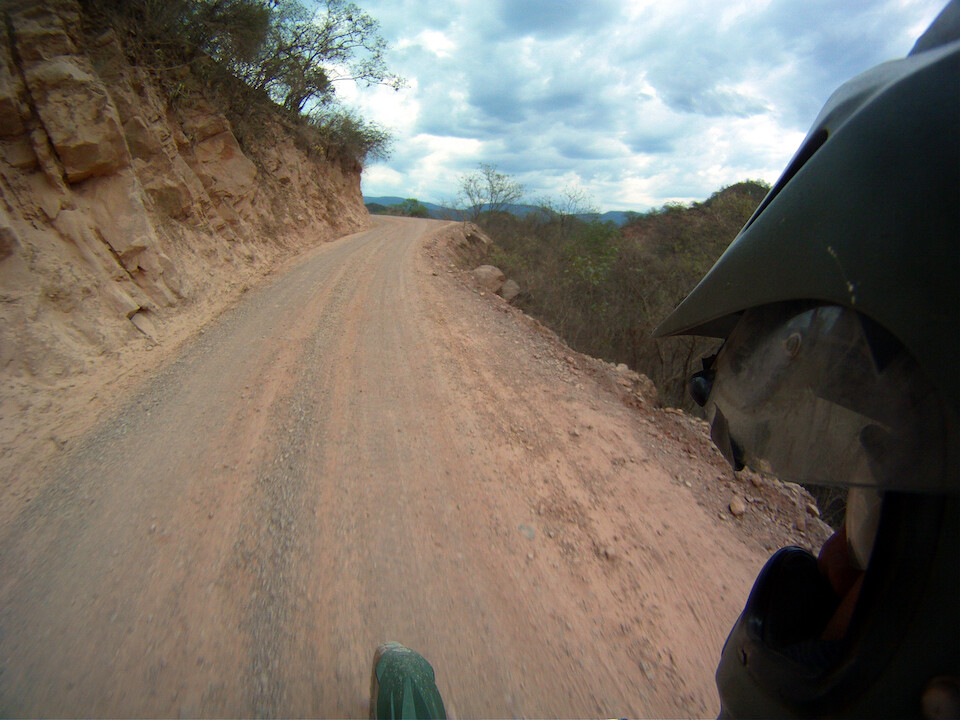
When there was no oncoming traffic, it was a true joy to be riding the pegs on a well-maintained dirt road through captivating landscape.
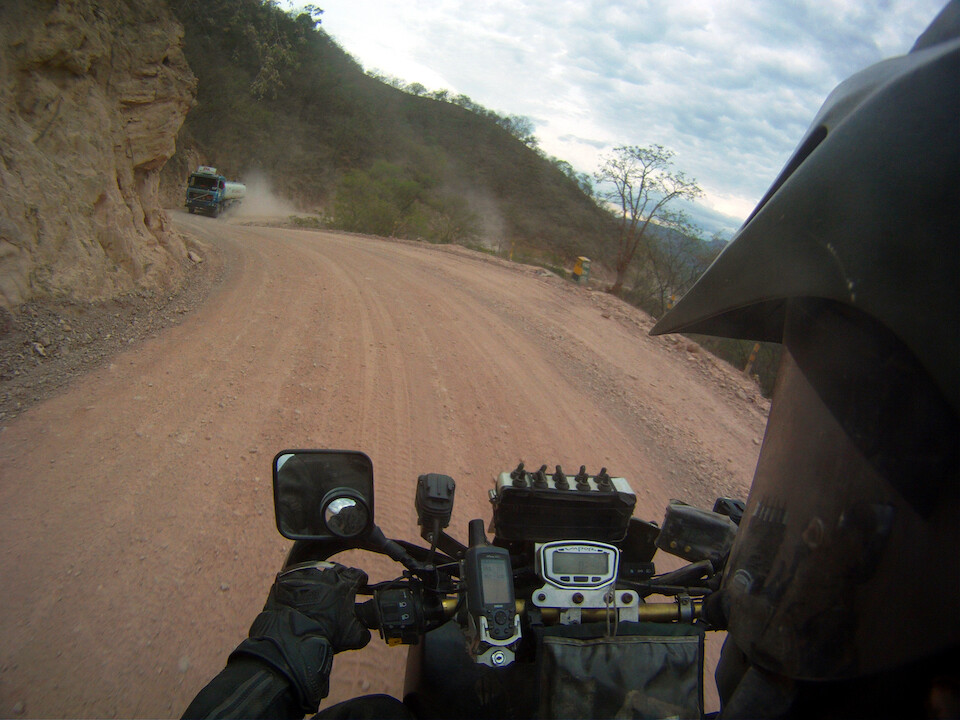
But, the trucks are always there. This is the principle route across southern Bolivia and traffic coming from Paraguay and the chaco of Argentina have to take this route to access Tarija and points westward of there.

This was also the end of the dry season, with the last rains falling months before, so the surface was pulverized into fine sand in places. I was glad I made it back to Bolivia before the summer rainy season started and made many of these roads impassable. I'll take choking dust over soups of mud any day.
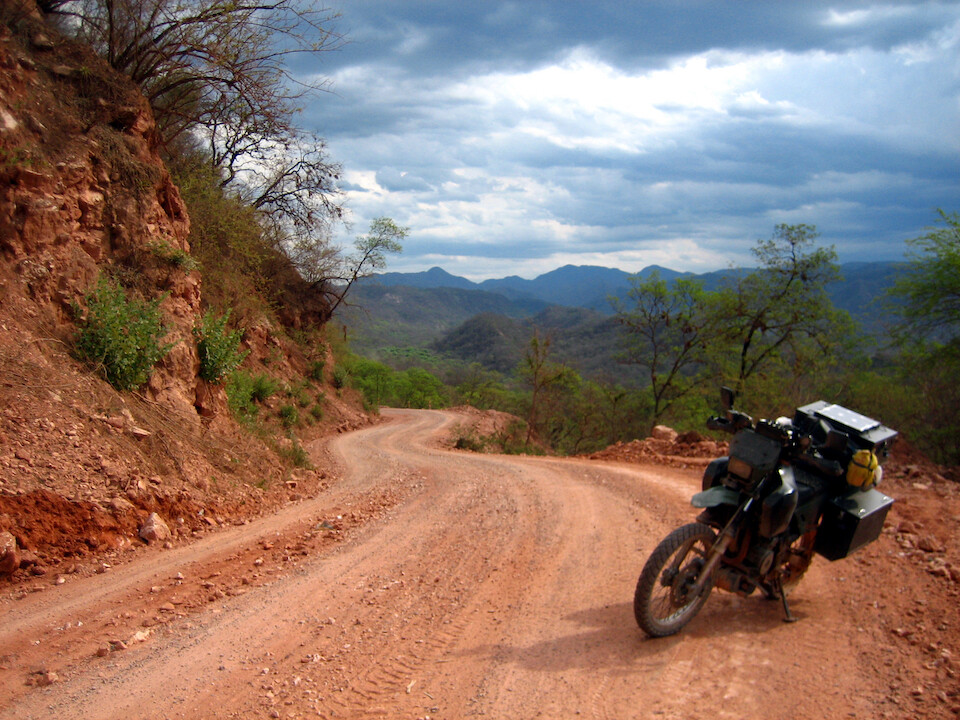
It was getting into late afternoon and the vivid colors were coming through stronger.
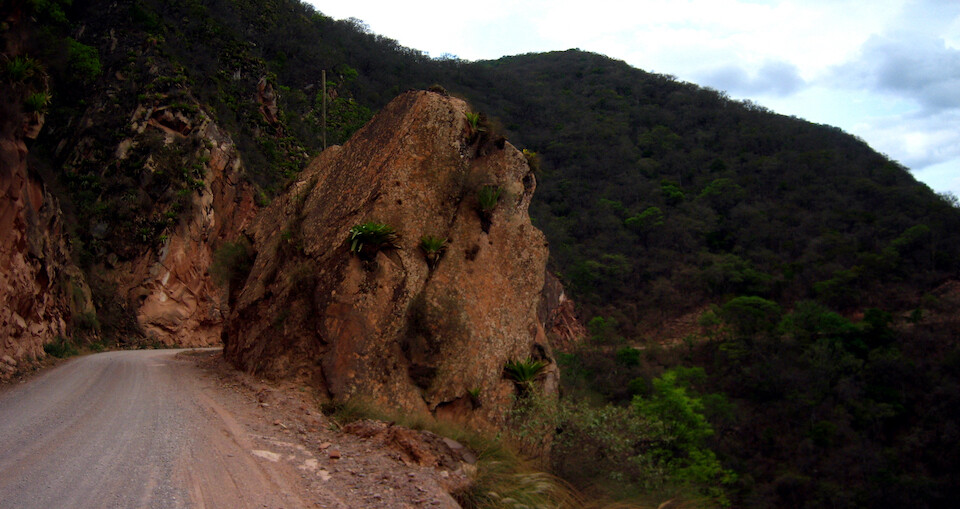
The narrowness of the route was dictated by huge boulders in places and dirt-lovers can rest assured this whole route wont be paved anytime soon.
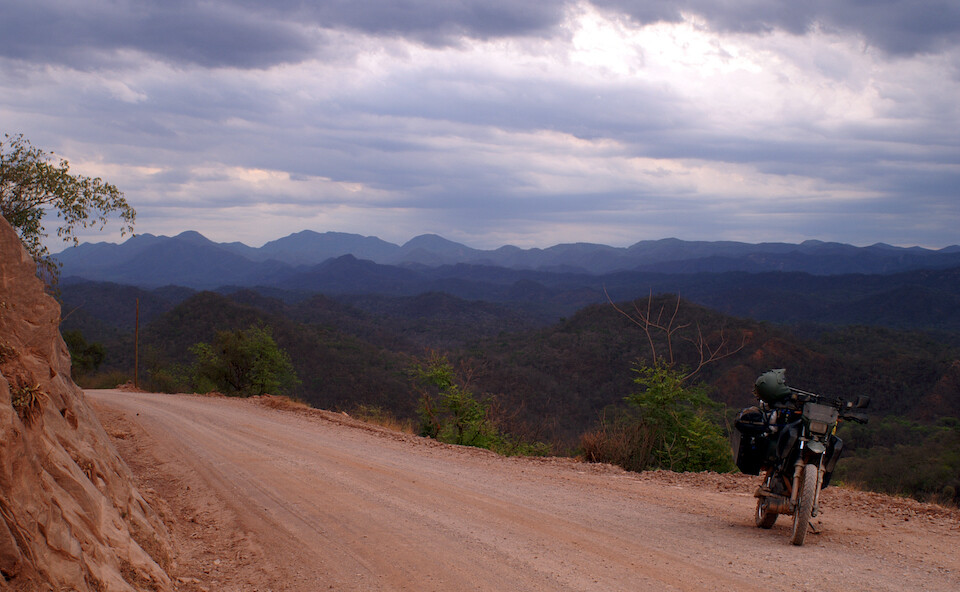
Darkening clouds changing the hues across the landscape.
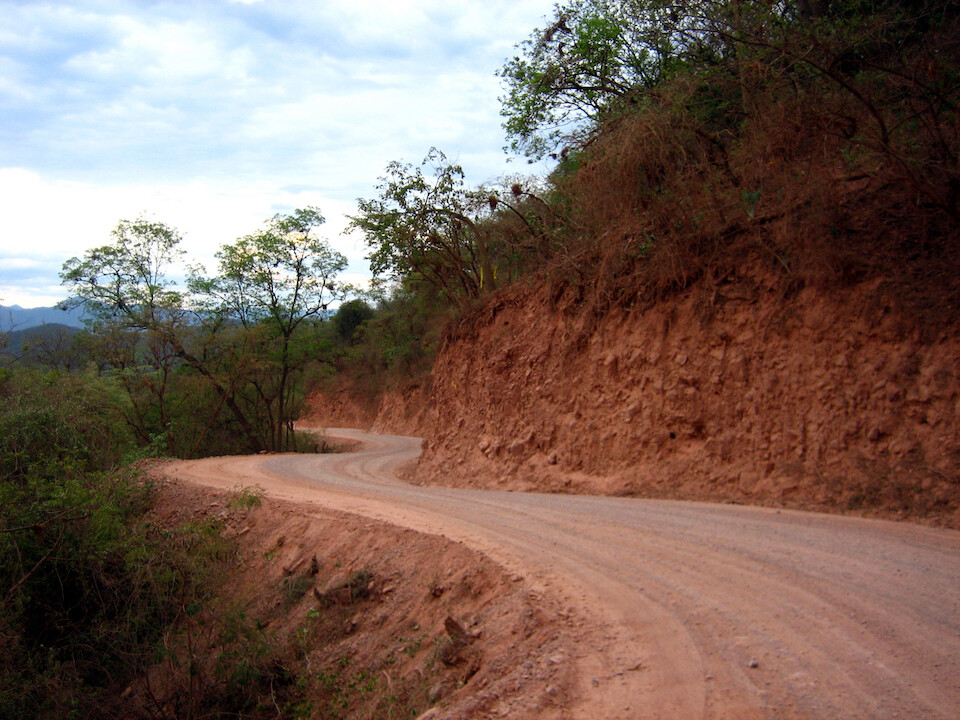
The on-going twists in the road kept the excitement up as the sun faded and I still had an hour to reach Villamontes.
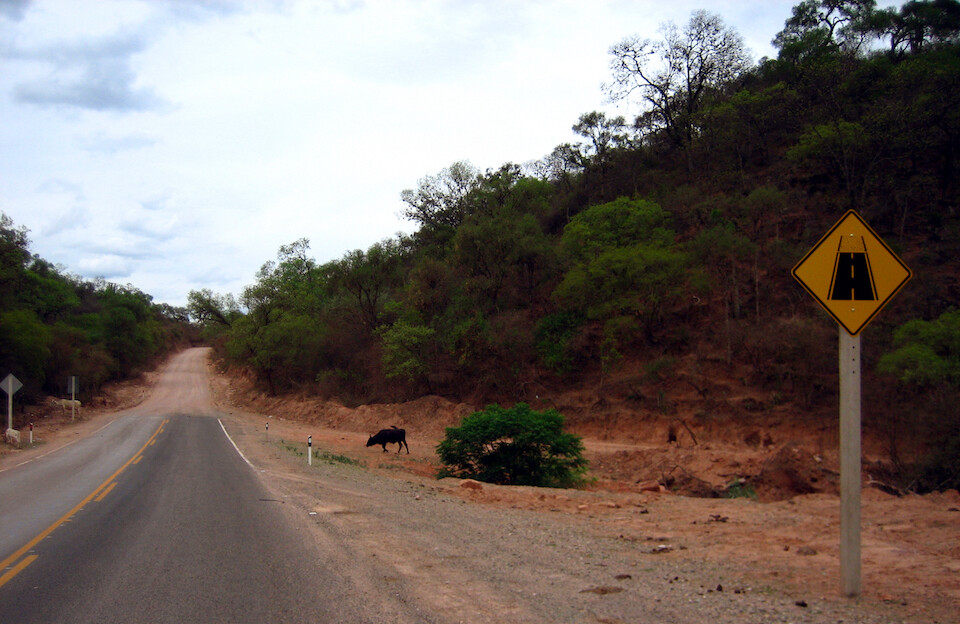
The universal 'pavement ends' sign.
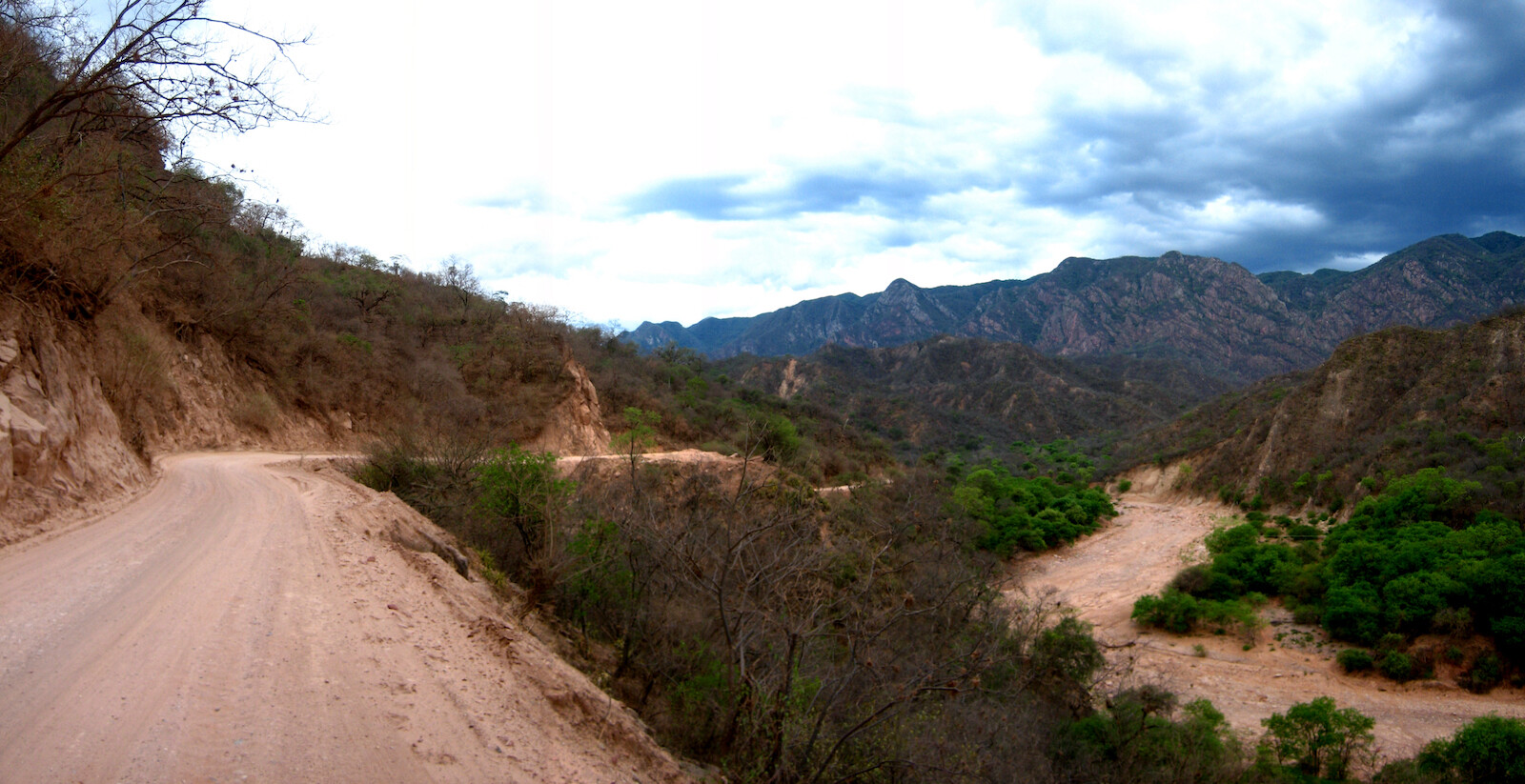
The dirt route resembling the dried river bed that it followed.
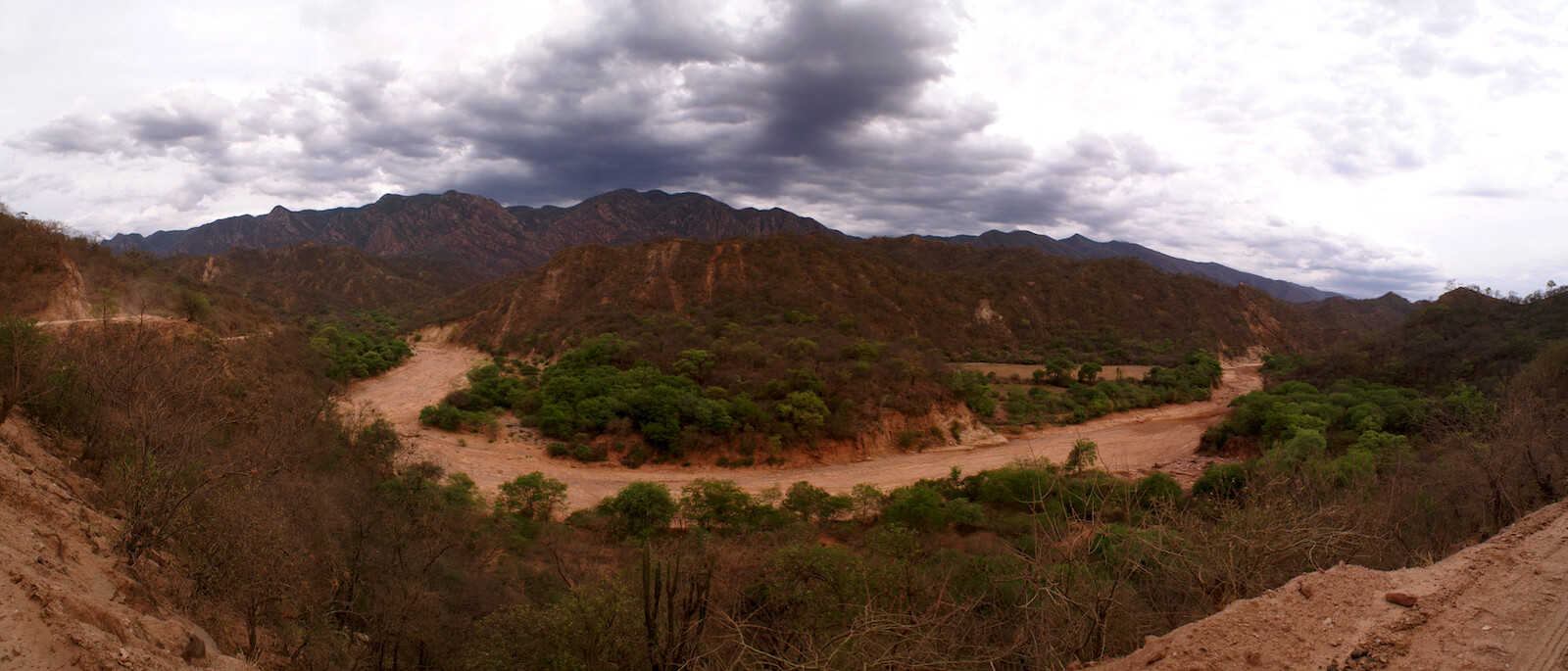
A panorama of about 170 degrees of a bend in a dried river bed. This whole area was just yearning for the first rains to fall.
Click here to see the high resolution version.
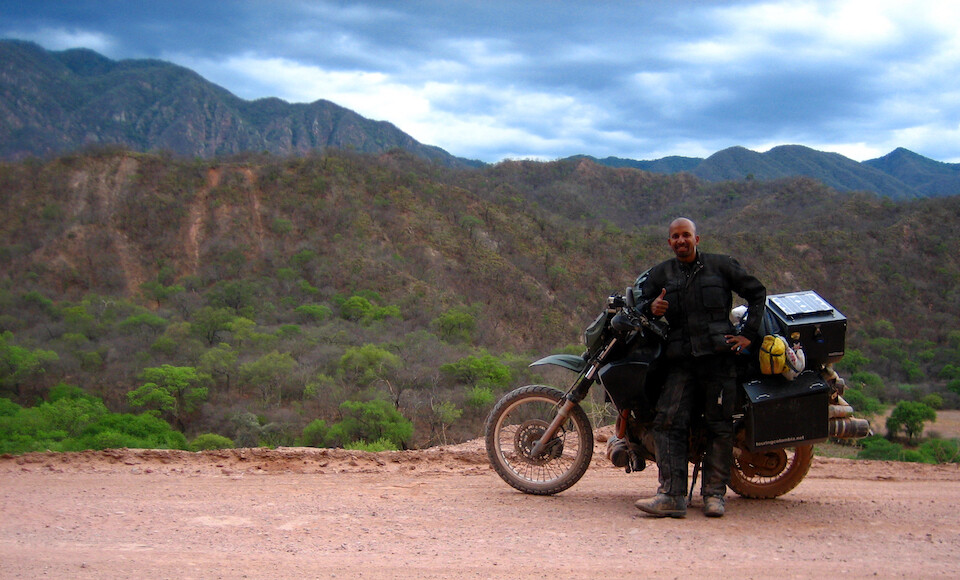
An enjoyable ride through southern Bolivia from Tarija to Villamontes.
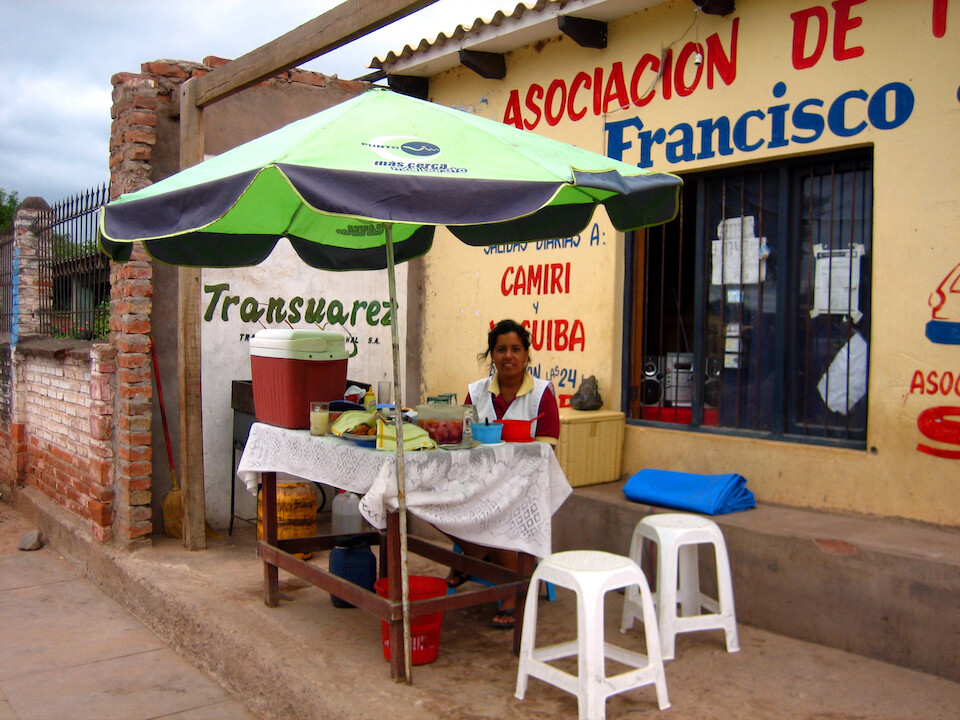
I spent the night in Villamontes, which is not much more than the first border town in southeastern Bolivia. I had a good breakfast at this lady's stall before setting off to Santa Cruz.
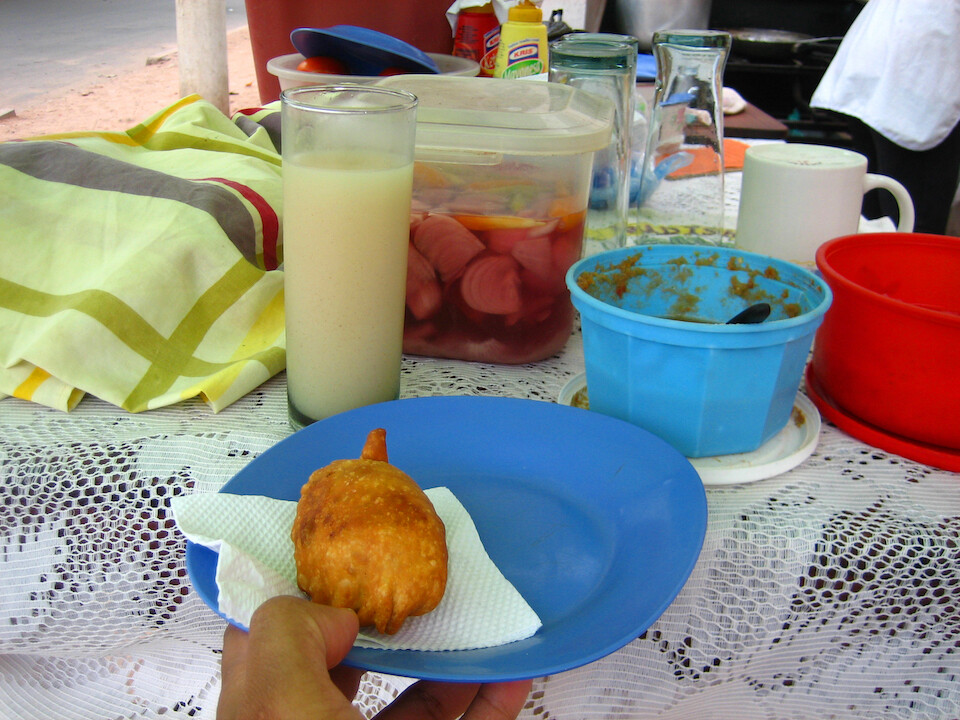
The culture of empanadas carrying over across the border as the cheap, street food. A fried puff with meat inside and an assortment of condiments (pickled vegetables, hot sauces, etc).
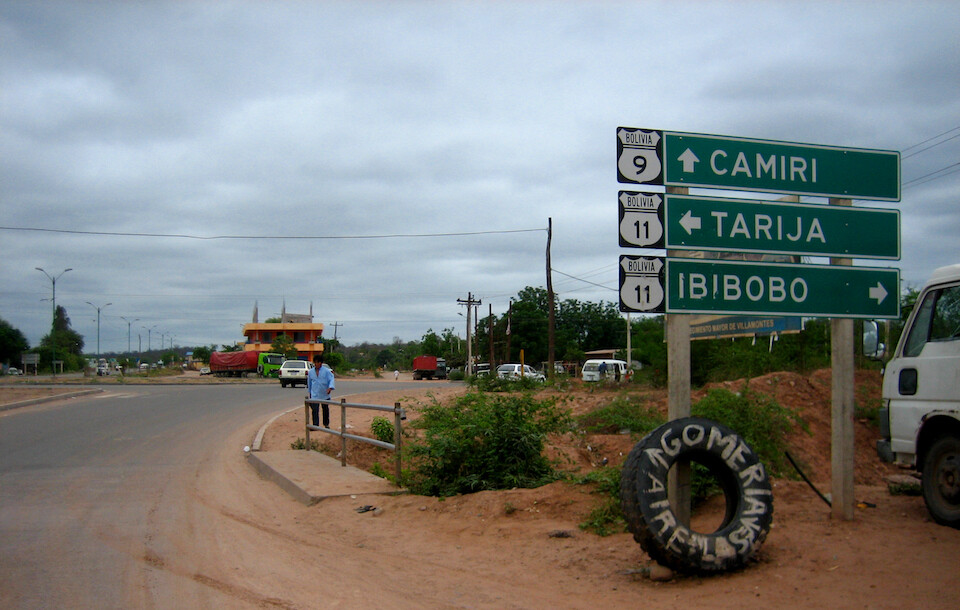
From Villamontes, you can head east to the border crossing at Ibibobo into Paraguay's Chaco.
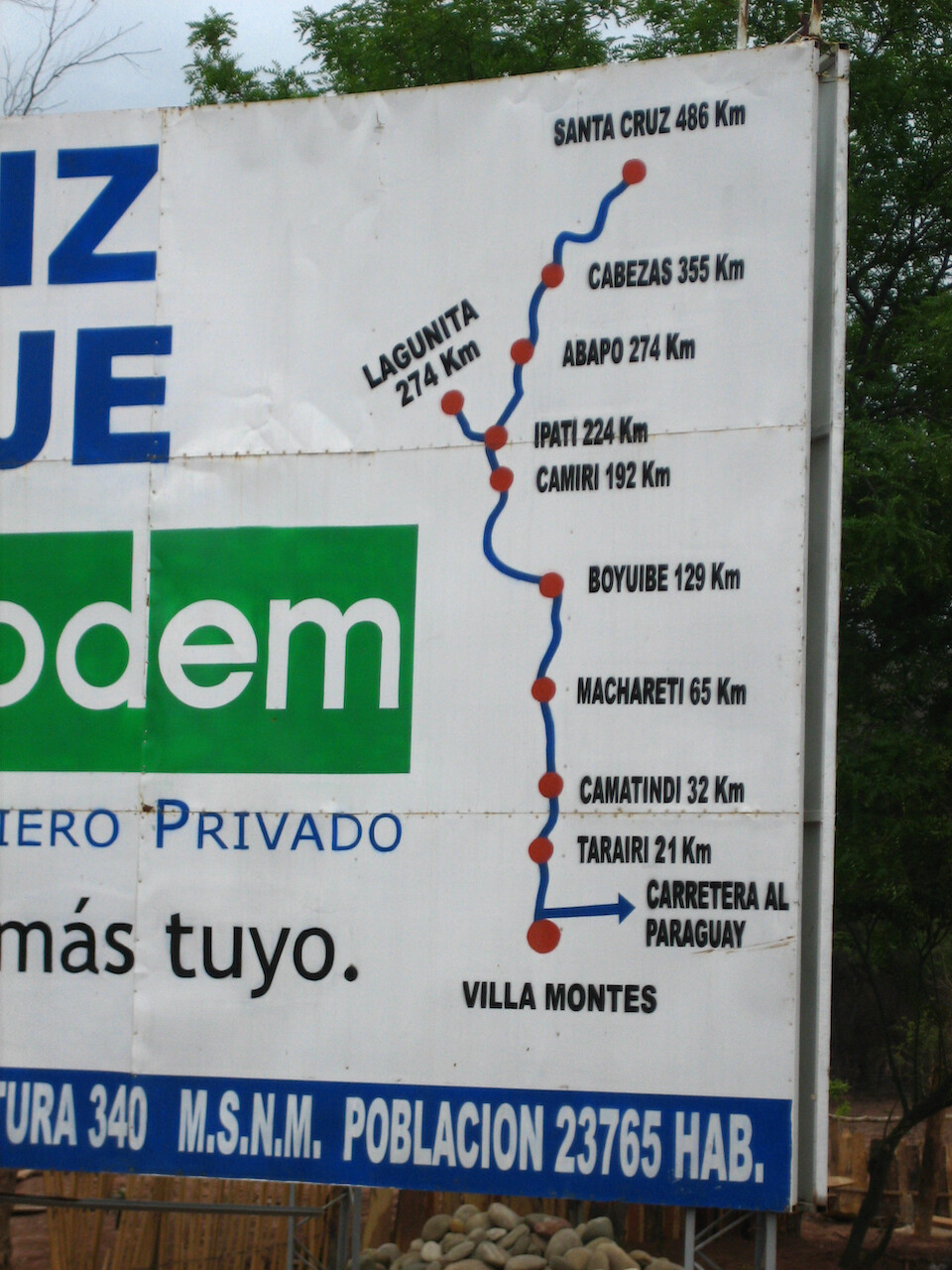
A distance board indicating the 500-odd kms to Santa Cruz.
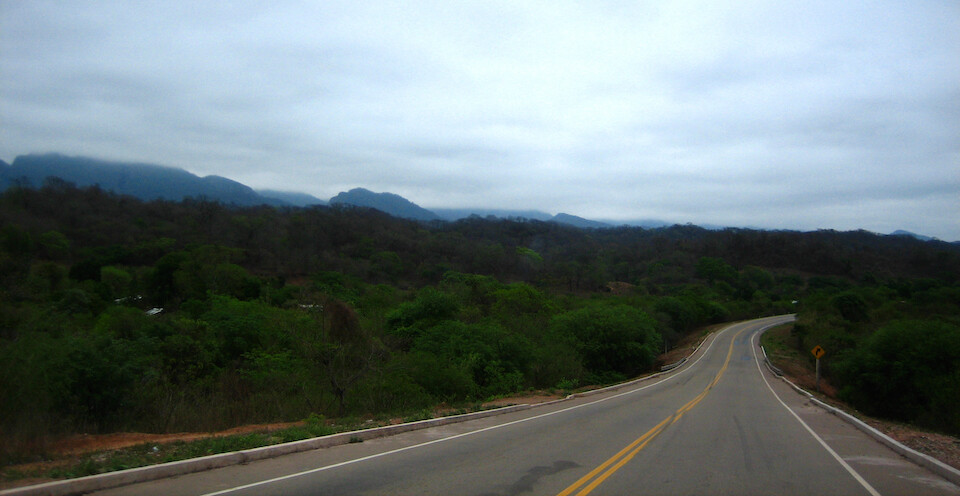
It was a flat ride on the well-maintained pavement with a few undulating hills and lots of greenery.
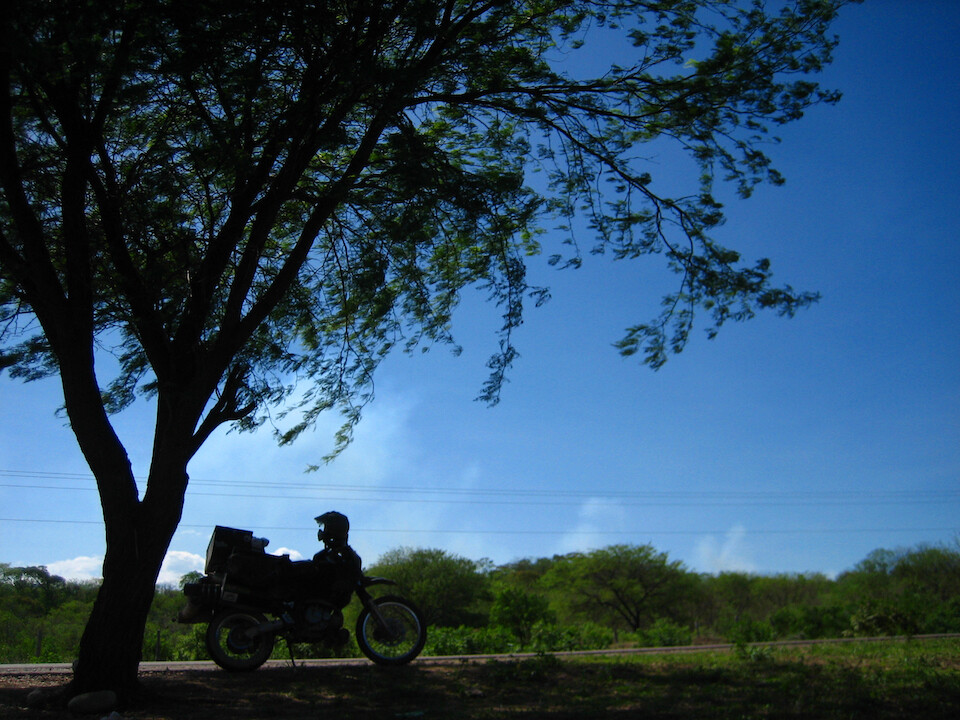
But the temperature picked up as the Andes dropped back to the west and the sun shone strong.
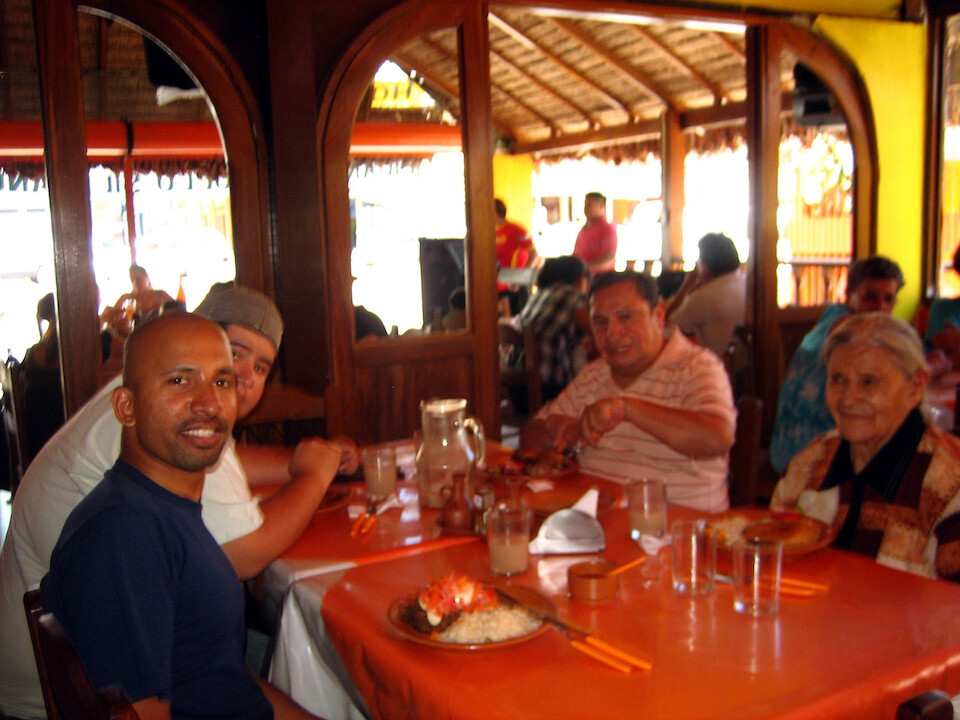
Alfonso (from La Paz) contacted his friend Oscar in Santa Cruz to help me get some bike maintenance done. He and his son, Miguel are gear heads, as well, but of the 4x4 kind, doing rallies in a modified Range Rover. We're having a Sunday meal with his mother at a country-style restaurant.
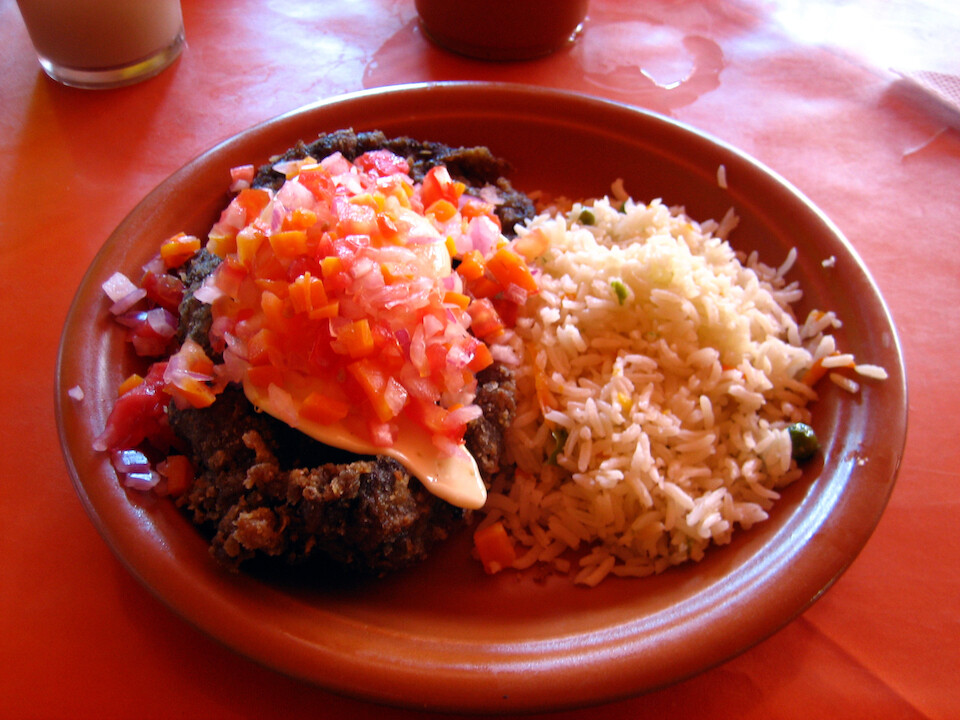
Steak, a-la milanesa style (breaded and fried) with rice and salad.
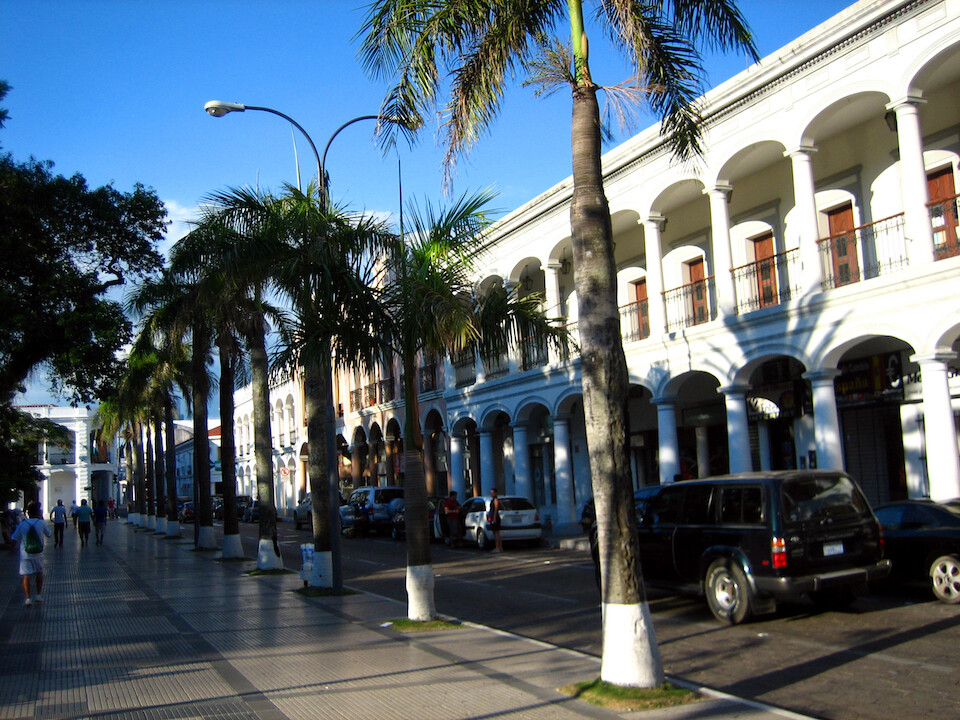
The shady central plaza of Santa Cruz de la Sierra, the most populous city in Bolivia (all though La Paz and its neighboring cities seem more crowded). This city has been in the news recently after discoveries of huge natural gas reserves nearby and their continued demand for autonomy from the rest of Bolivia. The population has been more right-leaning than Evo Morales' left-leaning La Paz and the Andean side of Bolivia. Their desire to move away from federal Bolivia shows through with the locals considering themselves more Brazilian than Bolivian and the climate seems to agree with that, as well.
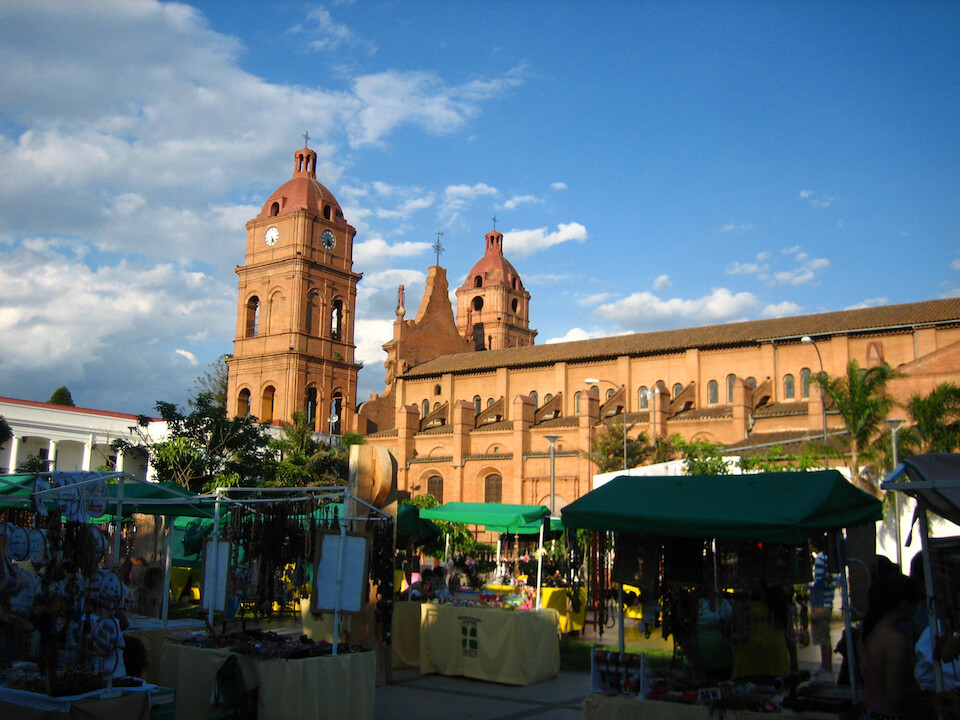
The large Jesuit-styled cathedral with a weekend crafts market in its shadows.
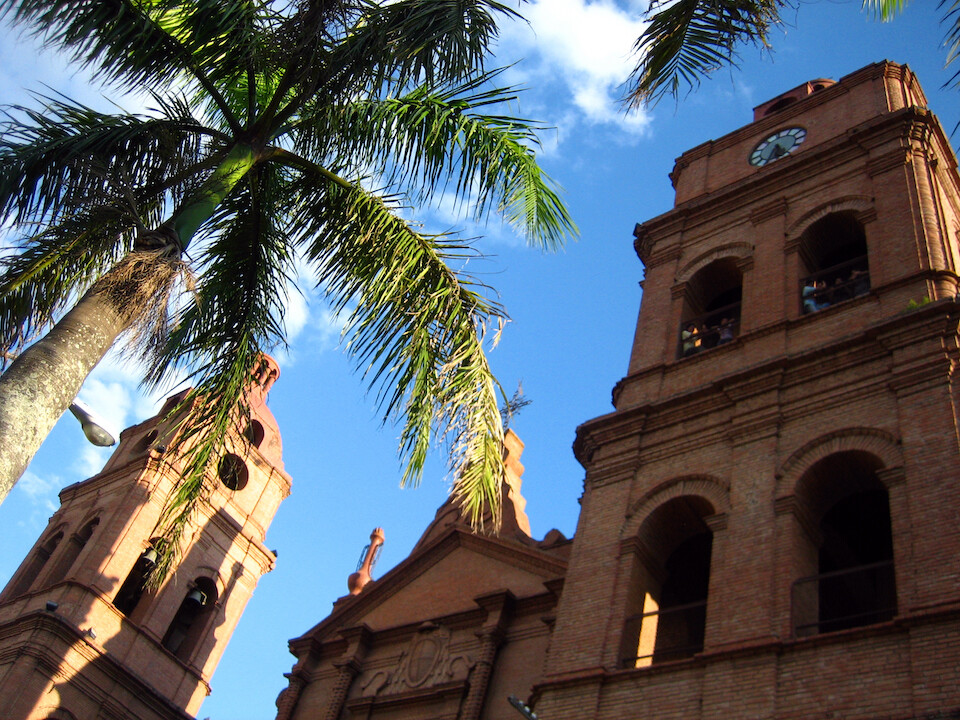
The brick face towers over the central plaza, but I was told most people are only religious here for ceremonial reasons and more easily bow down to El Dinero than hesus.
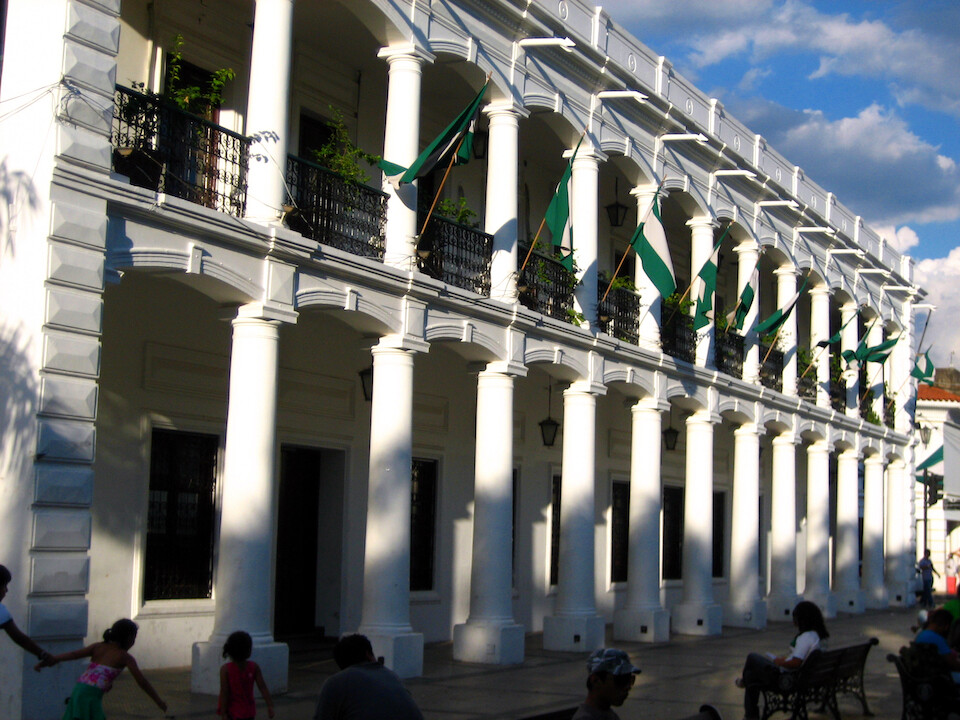
The government house proudly displaying the green and white flag of a hoped autonomous Santa Cruz rather than Morales' multi-colored flag. I thought seeking autonomy was still in the discussion stages, but with the local government touting it, they must be serious about their demands. The northern states (where I passed through heading to the Amazon) were also seeking autonomy since they feel the federal government in La Paz doesn't do enough for them and this all works against Morale's drive to centralize things around the capital. While I initially supported the voice of indigenous people finally gaining stature in this country, it now appears he's heading for single-party autocracy rather than a true multi-party democracy. Power corrupts all.
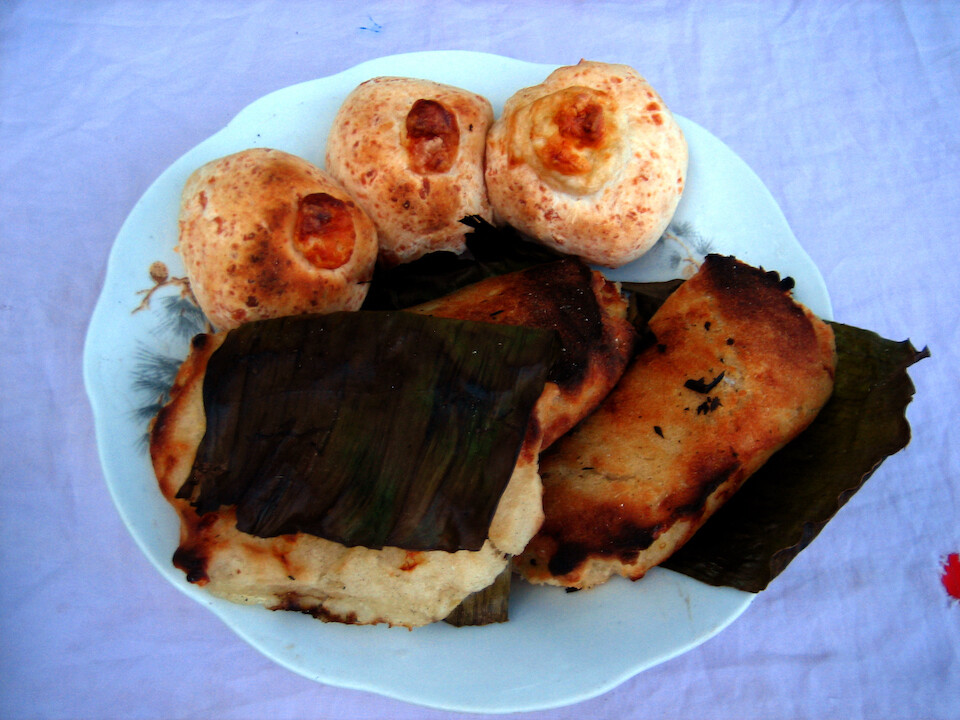
Getting a plate of various rice and corn dough grilled snacks.
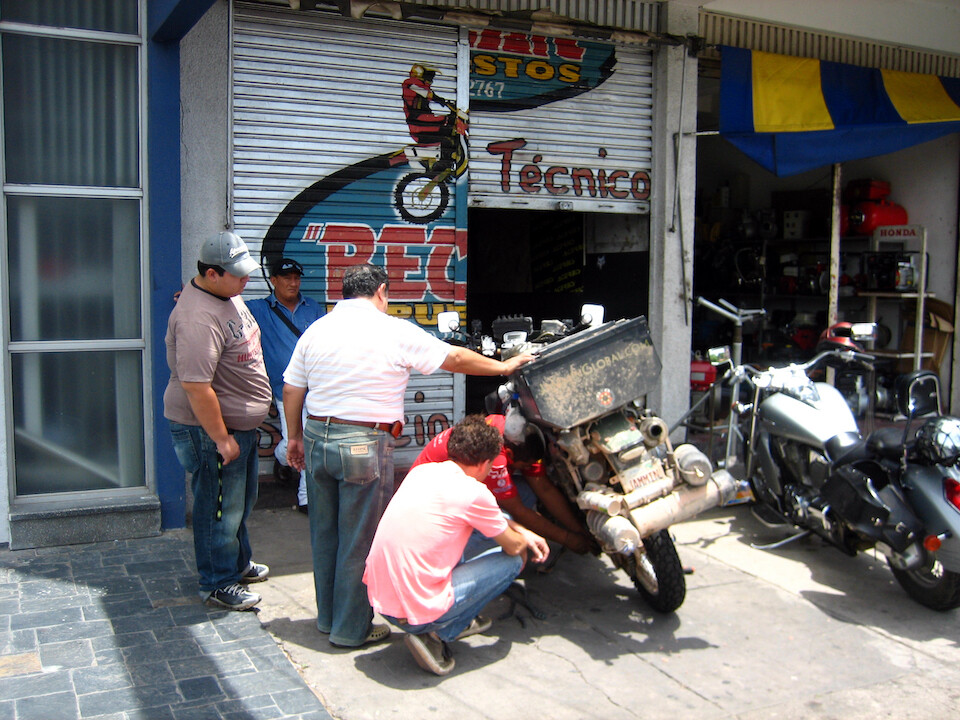
And then it was down to the business of preparing sanDRina for the extended off-road riding coming up. I waited till I got to Bolivia to replace some big-ticket items on the bike since everything is much cheaper here compared to the neighboring countries. I found the tires I needed at Becar Motos, a well-known shop in the motorcycling community. In Bolivia, if you buy something from a shop, you can usually mount it or have it serviced there for free. I bought a rear Pirelli MT-60, which is a 50/50 tire and a cheaper set of Kenda tires; a rear K270 (another 50/50) and a more aggressive K257D for the sandy Lagunas Route. I wanted to make sure that I could make it back to Buenos Aires without needing to buy tires in expensive Patagonia.
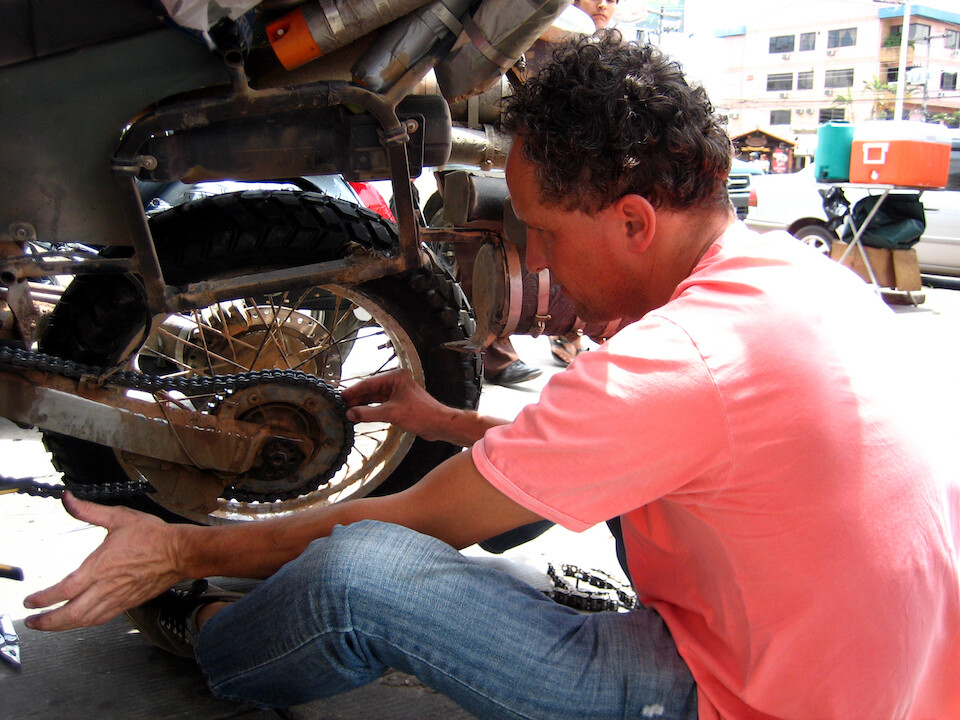
I also found some high quality DID chains and I mounted one and kept one as a spare. They were not the preferred cross-ring style, but o-ring nonetheless and it would be much better than the Iris chain that I mounted in Sao Luis, Brazil that stretched and formed kinks in its links within just 13,000 kms (8,125 mi), which is around half the life of a good quality chain. Iris is a brand from Spain and I would not recommend it, as other riders concur. It's easily available all through Latin America but lasts much shorter than quality Japanese chains. This is Gert here throwing in a helping hand.
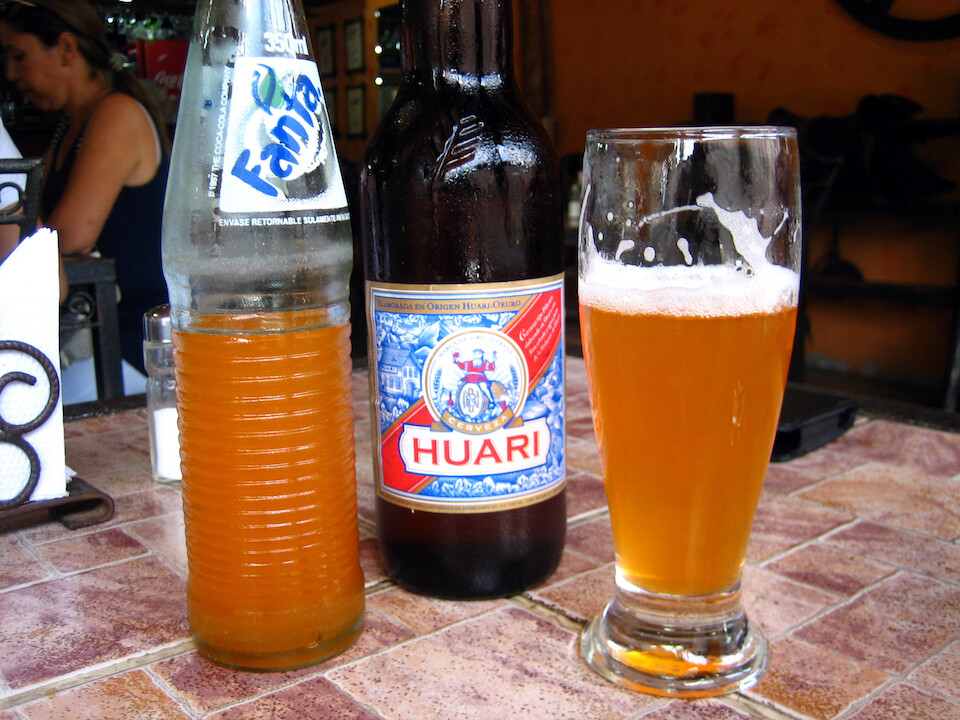
I contacted Gert through the HorizonsUnlimited communities page and he informed me of Becar Motos and introduced me to drinking a beer Santa Cruz-style, where you mix some Fanta with the lager. He's from the Netherlands and ended up here after a bike trip down the Americas and now has setup a few businesses.
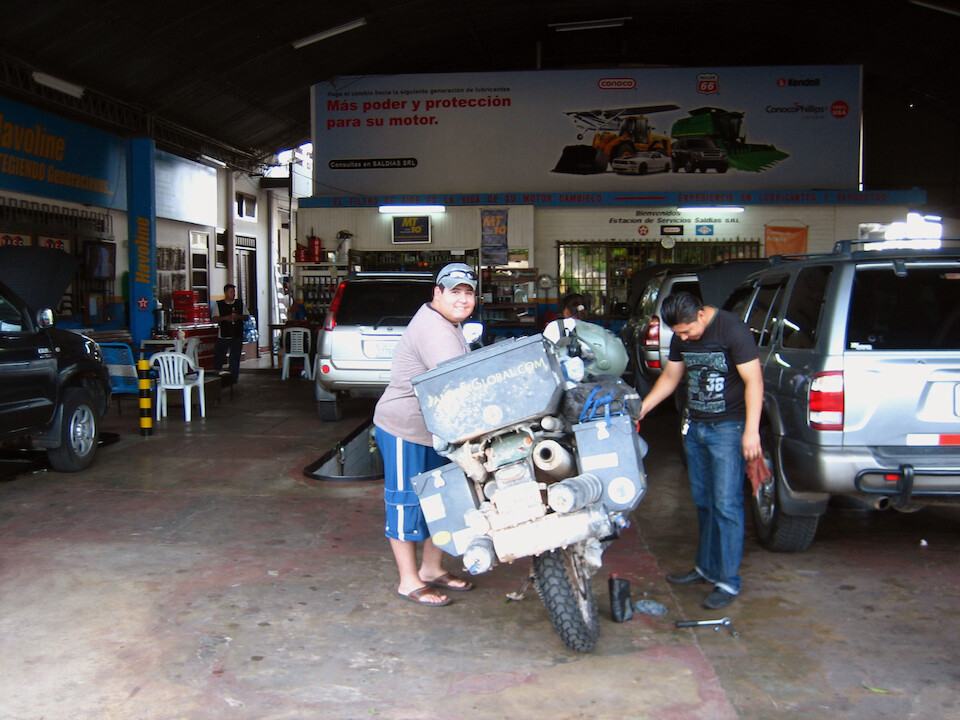
Changing engine oil and as explained, you only have to pay for the new oil and they change it for free. However, since I don't like to let anyone else put a tool on sanDRina (unless I highly trust them), I did the oil change myself, but they provided everything I needed, including some diesel to clean the reusable Scotts stainless-steel mesh oil filter.
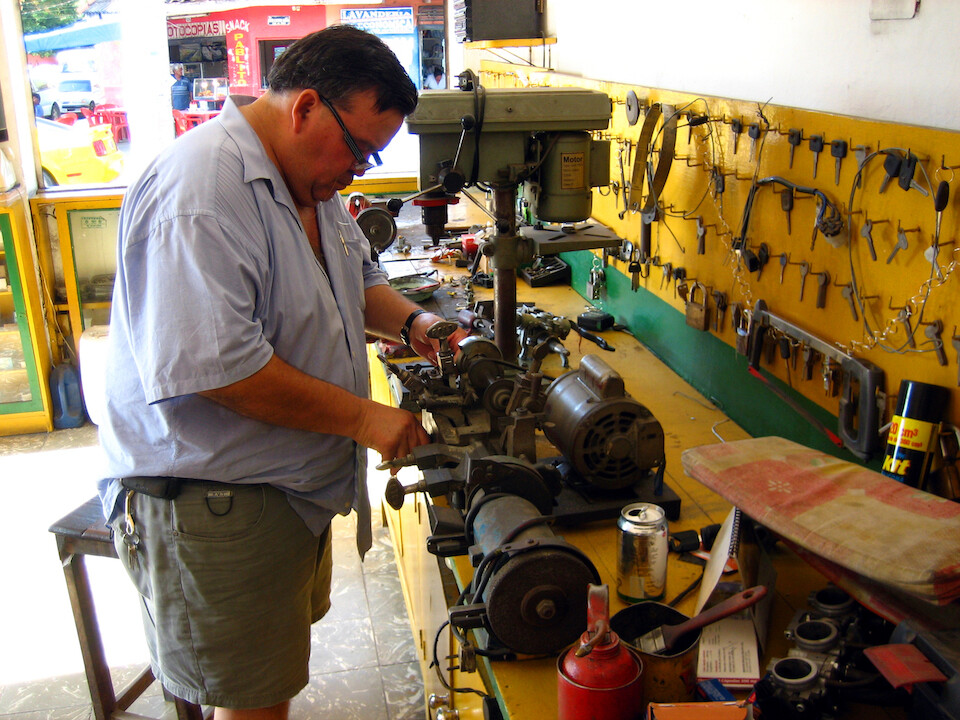
Getting a spare key made from an original Suzuki blank for B50 (USD 7). My old key was the original that came with the bike and it was 12 years old and slightly smoothed over. The new key felt crisp in the ignition.
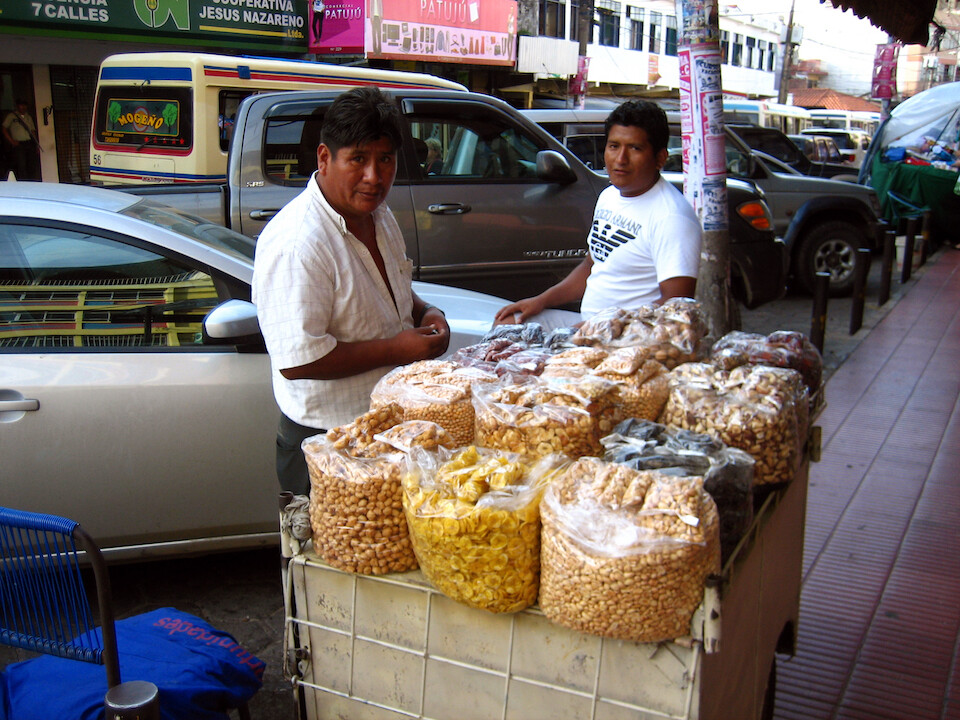
Stocking up on dried fruits and nuts. I like dehydrated prunes since they have a lot of fiber and help keep up healthy bowel movements, which can become constrained while camping in rough places. And usually when I'm riding off-road through remote places, I don't stop for lunch and instead just snack on prunes and walnuts through the day.
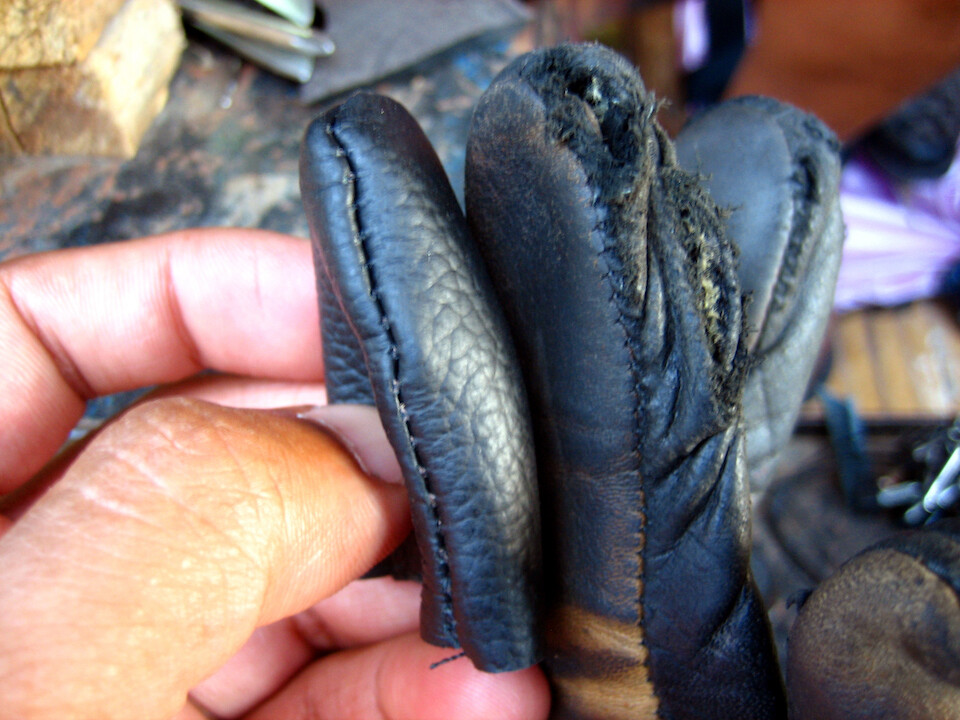
One major item I wanted to repair while in Bolivia was my primary riding gloves. The Teknic Speedstar summer gloves have served me well but after about three years of use, the stitches in the fingers were coming loose and I knew I could have them repaired in good ol' Bolivia, compared to Brazil or Argentina.

But even here, I was surprised at the number of cobblers that refused to repair them because it was going to be a complicated job.
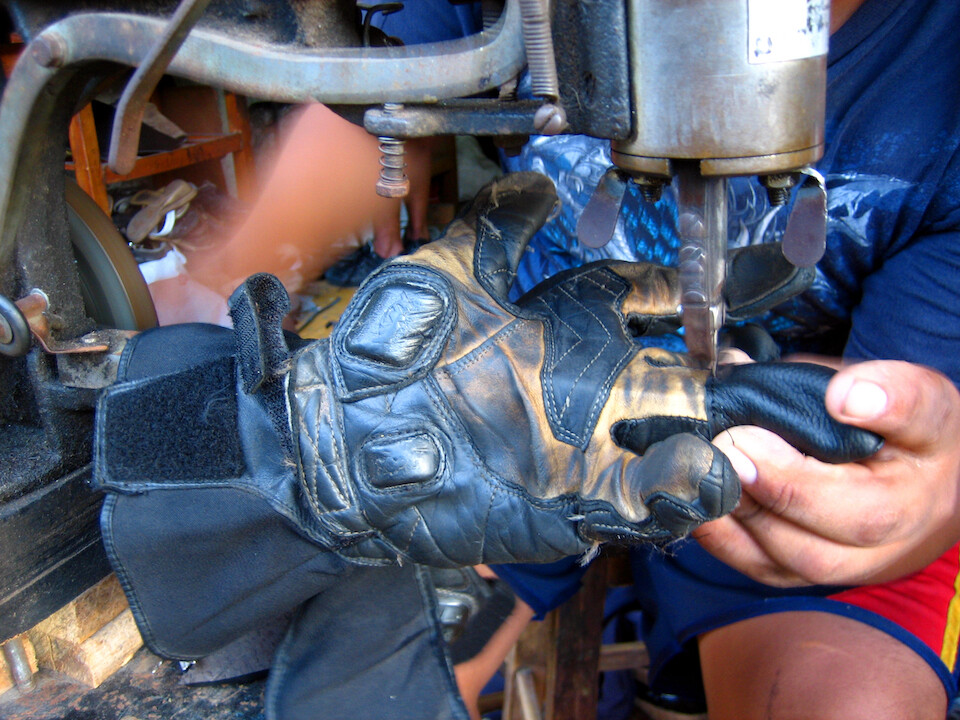
The cobbler had to slide the gloves onto a thin enough support to get the stitches to stick between the new leather cover and the older kangaroo hide.
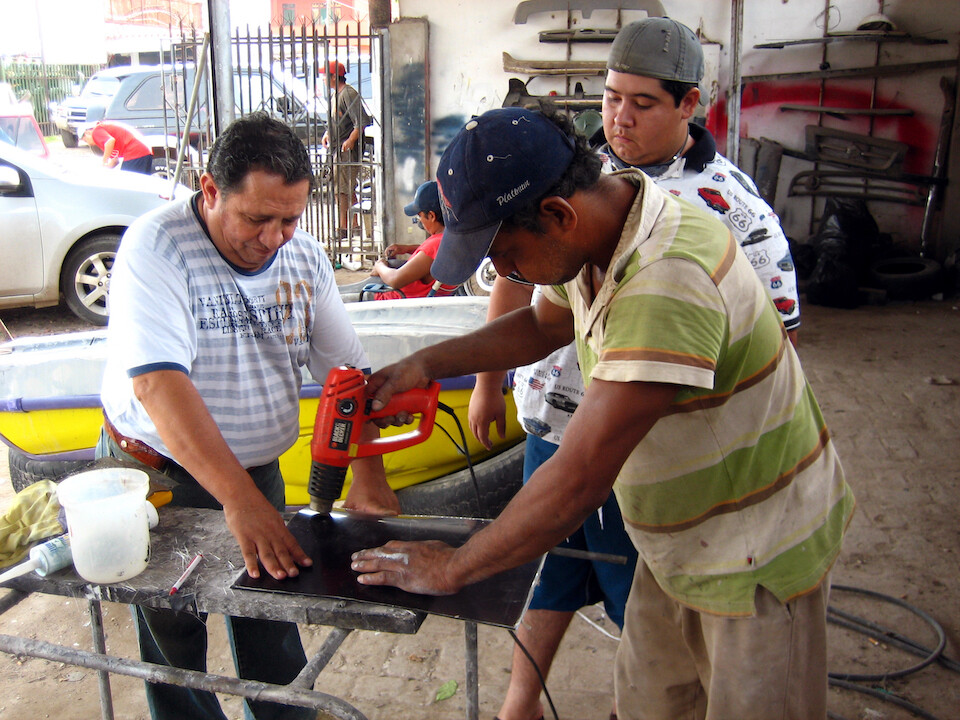
I also finally got the chance to make a new windshield, after breaking the earlier one as I left Bolivia for Brazil. Having the experience of making the original shield in Chicago, I knew what materials and tools were needed. We sourced some tinted Lexan and found an autobody shop that had a heat gun to put the bends in the Lexan.
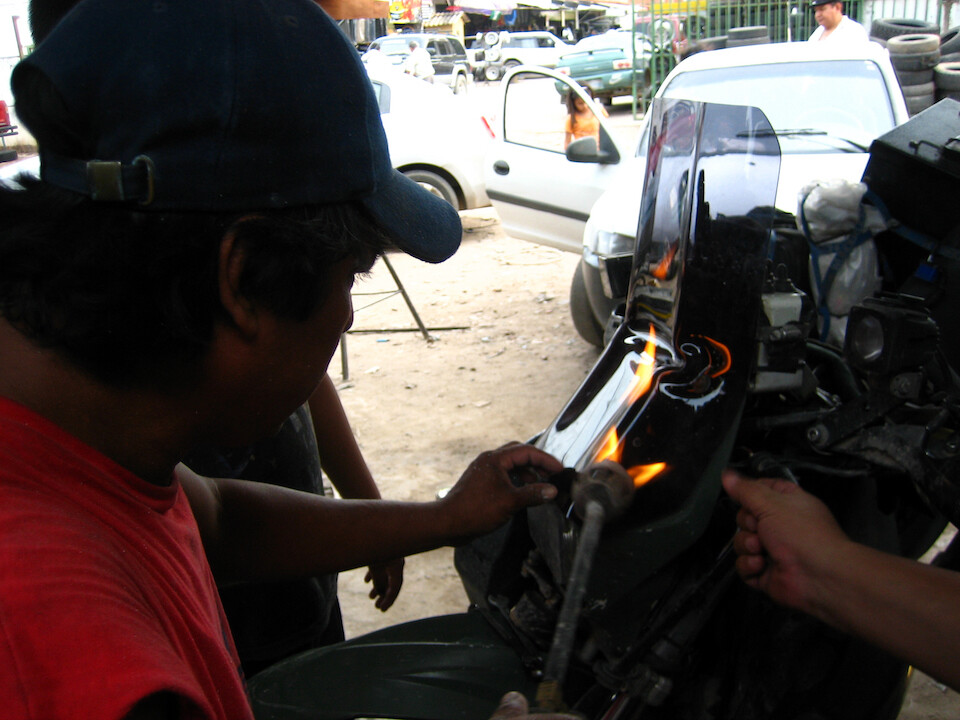
Molding the shield with a mini flame-thrower for the final adjustments on the headlight cowl. It's small enough not to block too much air in hot climates and would provide adequate protection from the winds in Patagonia.
Next: Bolivia II, Part 2: Ruta del Che Guevara
Previous: Argentina, Part 3: Colorful Hues of Salta and Jujuy